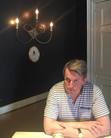Kevin Patrick's Blog
January 6, 2022
Norman Clifford's Aerial Adventures
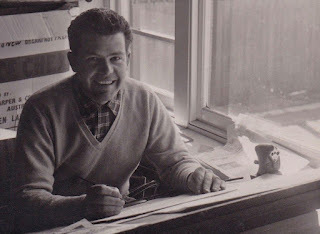 Above: Norman Clifford, Melbourne 1959Norman Clifford was one of many talented and enterprising Australian artists who created opportunities for themselves in a competitive comic book market in the 1950s by creating stories which resonated with local audiences, and stood out among the American and British comics which crowded newsagents' shelves at the time. His passion for aircraft and aviation history inspired him to create a string of successful air combat-themed comics that capitalised on the Royal Australian Air Force's then-current involvement in Korean War (1950-53), and the postwar fascination with breakthroughs in aviation technology.
Above: Norman Clifford, Melbourne 1959Norman Clifford was one of many talented and enterprising Australian artists who created opportunities for themselves in a competitive comic book market in the 1950s by creating stories which resonated with local audiences, and stood out among the American and British comics which crowded newsagents' shelves at the time. His passion for aircraft and aviation history inspired him to create a string of successful air combat-themed comics that capitalised on the Royal Australian Air Force's then-current involvement in Korean War (1950-53), and the postwar fascination with breakthroughs in aviation technology.The following is Norman's own recollections of this exciting early phase in his decades-long career as a cartoonist and commercial artist. It is reprinted here by arrangement with his daughter, Vicki Sach (editor and journalist at OneHorse Media). Unless otherwise indicated, all images are taken from the official Facebook page for Norman Clifford Aviation Artist (Special thanks to Jeff Batista for originally sharing the following material via the Facebook page for Old Australian Pre-Decimal Comics up to 1966).
- Kevin Patrick
Born in Footscray in 1927, Norman Clifford attended Tottenham State School. He completed one year of a three-year art course at RMIT before deciding to quit.
He worked at the Commonwealth Aircraft Corporation (CAC) at Fisherman’s Bend for three years, assembling Boomerang and Mustang airplanes.
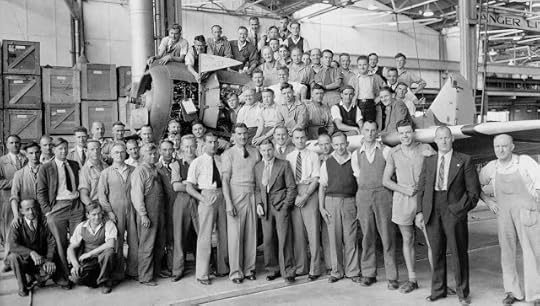 Above: Norman Clifford (third from right) on the CAC "Boomerang" assembly, circa late 1940s
Above: Norman Clifford (third from right) on the CAC "Boomerang" assembly, circa late 1940s
He applied to train as a pilot with the Royal Australian Air Force (RAAF), but the CAC wouldn’t release him (and he also failed the arithmetic part of assessment!)
He grew up devouring comics and developing his talent as a self-taught artist, focusing mostly on airplanes, finally illustrating a full-length comic which he pitched to Southdown Press. He drew the artwork…making the story up as he went…with his new bride, Shirley doing all the speech lettering.
The comics were a huge success, their relevant war topic and military aviation theme capturing public’s imagination, with their sales eclipsing the popular Disney and Marvel comics of the time.
Norman Clifford recalls …
When I was 24 years old and with no qualifications, line drawings were about all I could do, but at that stage they still lacked light and shade. I knew nothing about printing and very little about design.
I started work with John Warlow, who ran a photographic studio in Collins Street. His staple was weddings, but he did everything from portraits to industrial photography. It was there I learned all aspects of photography…developing, printing, retouching and print colouring, done in an era before colour photos (Note: The Melbourne Argus newspaper published an interview with John Warlow about amateur photography in August 1953, which can be viewed here).
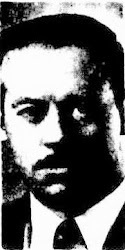 Above: John Warlow, 1953Warlow’s studio had an area large enough to photograph complete wedding parties or anything else requiring specific lighting. Clients came up by lift and entered the waiting room.
Above: John Warlow, 1953Warlow’s studio had an area large enough to photograph complete wedding parties or anything else requiring specific lighting. Clients came up by lift and entered the waiting room.
I hand coloured large photographic prints for Trans Australian Airlines (TAA) and mine were better than the other girls employed there because I knew the civil transport aircraft…the white roofs, natural metal and reflected light. I changed the TAA hand lettering to blue with a black outline, and coloured the concrete tarmac a light shade of fawn.
John Warlow nearly had a fit when he saw the contrast between my work to the girls, and was within an ace of having them redone but the TAA rep loved them!
It was an interesting place to work but my heart was still firmly fixated on comic books. I liked reading but the comics always interested me more because they were illustrated stories.
Could I do one?
Maybe.
------
I’d already had three goes, but conked out when I reached the limits of my ability.
Was I up to attempting a fourth? After all, they were only illustrated stories!
So away I went. When it came accurately drawing characters, I knew enough about cameras and film developing to ask friends to model the characters’ poses for me, which I then drew into the artwork.
My room at home was a combination of bedroom and art studio, while the family washhouse my darkroom. My parents were very patient, but my brothers thought it resembled a dump.
I slaved away, working at Warlows during the day, and on my art in the evenings and weekends (when I wasn’t doing Saturday weddings).
195I was a key year for me.
------
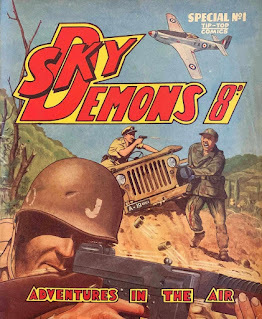 Working from my bedroom/studio, I created complete art for a 24-page comic book containing two action stories: Korea, and an air racing epic titled Speed Demons.
Working from my bedroom/studio, I created complete art for a 24-page comic book containing two action stories: Korea, and an air racing epic titled Speed Demons.
In both stories, airplanes featured as much as the cast. The artwork was a bit rough around the edges, but I offered it to Southdown Press [publisher of New Idea] in North Melbourne.
There were very few comic books that featured airplanes and those that did were done in typical American style with the flying secondary to the action. Mine were just the opposite… airplanes were the main focus with human characters a distant second. I didn’t know any other way to do it!
I was surprised when Bill Bednall from Southdown Press took it up with the only request being that the title be changed from “The Air Strip” to “Sky Demons”.
I was proud of “The Air Strip” title, which I thought was a rather clever play on words with air landing strip/comic strip. But Bill and his sales chief wanted something more flamboyant and outranked me. And so it was that “Sky Demons” was added to Southdown Press library under their ‘Tip Top Comics’ banner.
Bill Bednall had been a journalist in his younger days and wrote a spirited foreword for the No.1 Special, adding a few flourishes to jazz it up a bit. For example:
“Great pains have been taken by the artists to ensure that technical details are as accurate as can be…” and “…the artists are well versed in flying.”
That was a laugh, there was only me!
My work was based more on enthusiasm than anything else.
American comic books were in every newspaper shop and mine looked a bit rustic by comparison.
Sky Demons came to life on Southdown’s big flatbed printing press, and I heard nothing more about it while it was being distributed to newsagents Australia-wide.
During this era, television was still in the distant future and comic books were a popular form of entertainment. Over 100 titles were distributed monthly but very few were Australian and none exclusively featured airplanes. Hot competition from other sources included Micky Mouse, Donald Duck, Captain Marvel, Red Ryder, Hurricane Hawk, Buck Rogers and many others. If I’d done mine with this competition in mind I mightn’t have even started! I was completely naïve, and it shows in every illustration.
------
After Sky Demons had been distributed for a while, Bill called me in to Southdown Press to share some sales details. He revealed that my one comic effort had out-sold everything on the market, including Disney and Marvel Comics.
It was hard to believe!
Did my singular effort win on artistic merit?
I think there’s a few factors to consider: The story line, action and reasonably drawn adventure about airplanes (No. 77 Squadron, RAAF) and above all, pilots fighting in the Korean War was a topical subject.
As a beginner artist, I’d kicked a goal.
The Australian Mustang flying pilot hero ‘model’ in the first story was none other than my boss, John Warlow. In real life he was a portly photographer.
The story lines were mostly plotted on the go… in other words, I drew panels as I made up the story (which fortunately concluded at the finish-line!) I didn’t know you were supposed write the story, then do a storyboard to guide the layout. I didn’t even know what a storyboard was!
I knew nothing about the American technique for creating comics, which was to have a trio of writers, artists and speech letterers working on the strips.
Most of my comics waved the airplane flag against a backdrop of Europe and the Southwest Pacific… the Allies against enemy. Just to be different, one story was on air racing, while another was about a flying circus. Two of six comics I drew were a space fantasy.
The first comic, Sky Demons, smacked of inexperience but I gave it my all and the aircraft depicted were as accurate as I could draw them. When I compare my first comic to my last, I can see a vast difference between them, a change fired by my enthusiasm and experience.
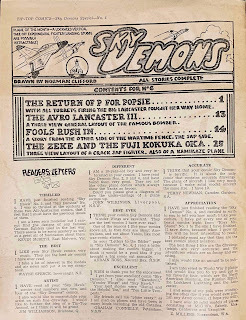 Above: Readers' Letters, Sky Demons, no.6Bill and his sales chief thought they had struck gold… a local artist with the right touch.
Above: Readers' Letters, Sky Demons, no.6Bill and his sales chief thought they had struck gold… a local artist with the right touch.I was amazed at the success, but quickly recovered when they paid me £100 and the prospect of more comics (and money) to come.
------
Back in my early days with Southdown Press, Bill would occasionally mention the number of letters rolling in applauding my strips. He’d scratch his head and mutter that it was the first time in his experience, that readers had ever been moved to write to the publisher about comic material. Their new ‘local artist’ reeled in surprise… even my own family (who weren’t the least bit interested in aviation) couldn’t figure out how I’d done it!
------
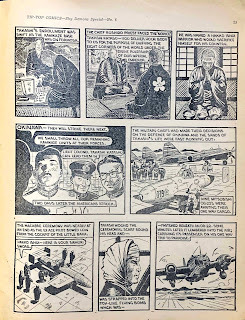 Above: 'Fools Rush In' (Excerpt)One boy who liked aeroplanes as much as I did was Ian Baker, who was so impressed, he kept a particular story called “Fools Rush In” from Sky Demons No 6.
Above: 'Fools Rush In' (Excerpt)One boy who liked aeroplanes as much as I did was Ian Baker, who was so impressed, he kept a particular story called “Fools Rush In” from Sky Demons No 6.
The storyline depicted a Japanese fighter pilot fresh from his graduation, bidding farewell to his beloved 'kanojou' (girlfriend) before leaving for the South-Eastern Pacific Theatre of war to fight against American and Australian air forces. When American’s bombed Japan and his lady friend was killed, he volunteered for duty as a kamikaze pilot and was one of many who flew a one man powered rocket, ‘Baka’, against advancing American aircraft carriers. He, too, was killed. Baka, the name given the rocket, meant ‘fool’…hence “Fools Rush In” to their death.
Ian went on to become a member of the Australian Society of Australian Artists (ASAA) and sent me an eleven-page photocopy extract of this story. His personal comment is embarrassing (but nice!) to read:
“In contrast to tedious repetitiveness of comic book super-heroes, Norm’s work embodied an intrinsic honesty in its approach”.
I wish I had known that when I was creating my comics, because the truth is that as a relative newcomer, I always felt I was making a fool of myself!
------
One morning the Warlow Studio staff were on a tea break in the colourist room when in walked a young girl recently employed as a wedding print colourist. He introduced her to everyone including me… and I was smitten. She was nearly 18 years old and dressed for summer in a sleeveless pale blue dress, nicely styled hair, pretty sun-tanned face, arms and shoulders.
Her name was Shirley, and we were married 12 months later.
Early on in our marriage, I was working from an ancient holiday house at the foot of Arthurs Seat in Dromana. To get to Southdown Press and with my wares under my arm, I had to either catch a bus to Frankston, then the train to Melbourne, or thumb a ride.
I converted one room into my ‘studio’, installed all my books and drawing equipment and set about creating comics.
Covers were in colour but inside pages were black and white. Strangely enough, working exclusively in black outline shading made for steady and controlled rendering of the story illustration later, but one thing I discovered…I was a dud at speech lettering! It was the Achilles heel of my comic career.
Shirley got sick of me complaining about it and volunteered to have a go. Shock and surprise, her rendering of the words was unbelievably good from the outset… neat and clean… she reckoned it was easy! She wasn’t an artist (although could have been) her lettering was very nearly typeset standard. She was a natural.
------
While all my this was going on, Southdown Press informed me they had rights to post-war Buck Rogers material, minus covers and Bill Bednall gave me the job of doing about five colour Buck Rogers covers. I’d been reading Buck Rogers since I was a kid, so I was thrilled to be doing it for the money AND the privilege!
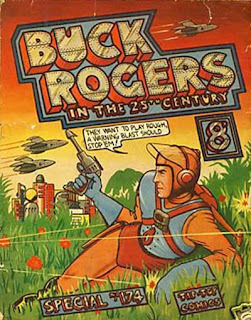 Above: Cover art by Norman CliffordHowever, pressure was mounting and the incessant application to continually produce artwork for my storylines was starting to tell, but they represented my bread and butter so there wasn’t much I could do but hang in there.
Above: Cover art by Norman CliffordHowever, pressure was mounting and the incessant application to continually produce artwork for my storylines was starting to tell, but they represented my bread and butter so there wasn’t much I could do but hang in there.
Then the worst happened… TELEVISION!
TV entered the scene [in 1956] and almost overnight the bottom dropped out of Australian and American comic sales. Southdown Press needed to keep the presses rolling and Bill Bednall didn’t want to give up without a fight. He decided to scrap further issues of Sky Demons and asked me to do my comics under individual titles, so I dreamt up various comics; Daredevil Comics, Wonder Wings, Billy Battle, Thrilling Space Adventures, and… with a last roll of the dice… the Christmas Comic, featuring a coloured cover depicting the Russian space dog ‘Sputnik’ circling the world.
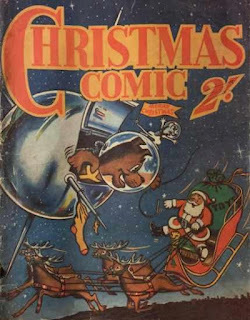 Above: Christmas Comic, 1958Comic prices dropped to sixpence and finally the last few issue covers were reduced from full colour to two-colour to save money. But with moving pictures now in many lounge rooms, television won out. All the new Southdown titles were scrapped and sadly, so was I, leaving me wondering where my next quid was coming from.
Above: Christmas Comic, 1958Comic prices dropped to sixpence and finally the last few issue covers were reduced from full colour to two-colour to save money. But with moving pictures now in many lounge rooms, television won out. All the new Southdown titles were scrapped and sadly, so was I, leaving me wondering where my next quid was coming from.------
One of the friends I asked to model for me was my best mate, Mike Dunbar.
To my delight, he’d joined the air force and was in 3rd Course (1950-53) at the RAAF College, Point Cook. I was envious of [him], but had to be content with drawing the flying machine rather than actually flying them. Mike thought it was a great joke and quite an achievement to make the grade turning out comics.
After the success of Sky Demons No. 1 and anticipating further comics, I [sought] assistance from Cadet Mike. Some of his 3rd Course Cadet friends would visit me in uniform at the Warlow Studio on their Saturday off and we’d visit a coffee shop, exhibition, or anything else worth looking at around Melbourne on a Saturday.
I already had a Type C leather flying helmet from a disposal store, but asked Mike another RAAF College Cadet, Ron Green, 4th Course, if they could possibly scrounge a loan of a flight overall and flying boots and bring them on a Saturday visit as I wanted to know what gear a pilot wore. They obliged and I photographed them in costume on the roof of Howey Place Arcade in Collins Street.
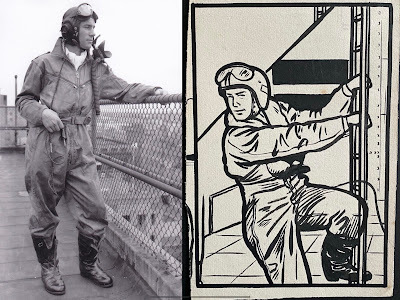 Above: Mike Dunbar (left) posing in RAAF flight gearI’d kept in touch with Mike right up to the time he graduated, gained his wings and after a tour with 77 Squadron, RAAF, in Korea, he was posted abroad for a three-year stint in Germany with the Royal Air Force, then back to RAAF Base East Sale for duties as instructor in the early-sixties.
Above: Mike Dunbar (left) posing in RAAF flight gearI’d kept in touch with Mike right up to the time he graduated, gained his wings and after a tour with 77 Squadron, RAAF, in Korea, he was posted abroad for a three-year stint in Germany with the Royal Air Force, then back to RAAF Base East Sale for duties as instructor in the early-sixties.We were great friends, and I asked him to be godfather to my son, also named Michael.
I'd been with the agency for four years when in 1962, Flight Lieutenant Michael Dunbar was killed in a terrible accent that wiped out four Vampire T33 two-seat trainers at the RAAF base in East Sale.
They were rehearsing as part of the “Red Sales” aerobatic team when they crashed, killing all four pilots and two crew members. It was a terrible shock, and I was unable to go to work the next day.
Notes from Vicki Sach: (Daughter of Norm Clifford)
After his career as a comic artist ground to a halt and with a young family to support, Norm began work as a commercial artist (known these days as a graphic designer). This was during an era when all products for print advertising were illustrated by hand. He worked for major Melbourne advertising agencies before going freelance, setting up his drawing board in the lounge room of the family home in Glen Waverley during the 1970’s.
One of his first major freelance jobs was as advertising illustrator for the first Kmart store to open in Melbourne, located in Burwood.
Military aviation remained his passion, and he became known for his accuracy and attention to detail when it came to illustrating vintage aircraft. He was asked to work for the Aviation Safety Digest, and was commissioned to illustrate multiple magazine and book covers as well as air show posters.
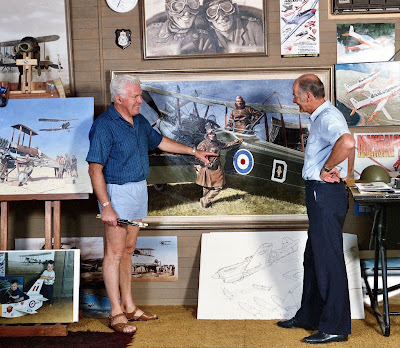 Above: Norman Clifford (left) in his studio, 1988In 1995, he was commissioned by Australia Post to paint a series of Australian military aviation stamps.
Above: Norman Clifford (left) in his studio, 1988In 1995, he was commissioned by Australia Post to paint a series of Australian military aviation stamps.
He completed many commissioned paintings for the RAAF and his artwork can be found at the Point Cook museum, Australian air bases, the Australian War Memorial and in many private and corporate collections world-wide.
He was obsessed with authenticity…his airplanes had to be as accurate as he could possibly paint them! Ditto pilots and personnel, and he would frequently dress his long-suffering family in vintage RAAF gear and photograph them in his back yard to use for painting reference. If he couldn’t buy or borrow what he needed, he would source specifications and make it himself, once mocking up two life-size machine guns made from wood, just so he could photograph a family member dressed in full WW1 pilot gear complete with helmet and goggles, sitting on a kitchen chair taking “aim” at the enemy.
Now 93 years old, Norm is no longer able to paint after a minor stroke left him with balance issues. But his passion for all things military aviation remains as strong as ever!
The following images were sourced from these websites: Photo of John Warlow (Trove-National Library of Australia); Buck Rogers in the 25th Century Special, no.174 & Christmas Comic (AusReprints); Sky Demons Special, no.1 & excerpt from 'Fools Rush In' (Old Australian Pre-Decimal Comics up to 1966/Facebook). All other images from Norman Clifford Aviation Artist and/or courtesy of Vicki Sach/One Horse Media)
October 2, 2021
Antipodean Currents: Comic Art in Australia and New Zealand (Part 2)
I originally wrote 'Antipodean Currents' in 2016, after being commissioned to write a brief "layman's history" of comic art in Australian and New Zealand from the late 19th century to the present day. It was originally intended for an academic essay collection, but the project was eventually cancelled, and it never saw print. I subsequently made an illustrated PDF version of this essay available on my Academia page, but this was only available to Academia.edu subscribers. As I've had numerous academics and comic fans/historians ask me to send them copies over the years, I've decided to publish it over several instalments on the Comics Down Under blog and make it available to a wider audience (You can read the first instalment here)
I hope you'll enjoy reading the second installment of "Antipodean Currents".
- Kevin Patrick
Comic Strips and the Popular Press
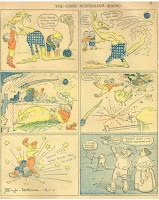 Fig.1When Great Britain granted political independence to the newly proclaimed Commonwealth of Australia in 1901, there followed an outpouring of patriotic magazines, some of which made extensive use of cartoons and comic strips to comment on the vices and virtues of the young nation. Chief amongst these was The Comic Australian (1911-1913), the first magazine to print coloured comic strips illustrated by Australian artists. Oddly enough, it was the poet Hugh McCrae (1876-1958), who drew a pioneering series of comic strips for the magazine, featuring a bushland retinue of kangaroos and koalas, which made the then-innovative use of speech balloons enclosed within formally separated panels (Figure 1) (Note #1). The adoption of Australia’s exotic fauna as anthropomorphic characters would become a recurring motif in Australian comics from this period onwards.
Fig.1When Great Britain granted political independence to the newly proclaimed Commonwealth of Australia in 1901, there followed an outpouring of patriotic magazines, some of which made extensive use of cartoons and comic strips to comment on the vices and virtues of the young nation. Chief amongst these was The Comic Australian (1911-1913), the first magazine to print coloured comic strips illustrated by Australian artists. Oddly enough, it was the poet Hugh McCrae (1876-1958), who drew a pioneering series of comic strips for the magazine, featuring a bushland retinue of kangaroos and koalas, which made the then-innovative use of speech balloons enclosed within formally separated panels (Figure 1) (Note #1). The adoption of Australia’s exotic fauna as anthropomorphic characters would become a recurring motif in Australian comics from this period onwards.The growth of Australia’s suburbs throughout the 1920s, serviced by public transport networks, created a new commuter audience for newspapers and periodicals (Note #2). Newspapers became a more visual medium, subscribing to what historian K.S. Inglis called the ‘law of increasing brightness’, whereby ‘the headlines [grew] higher …the display advertisements more seductive … [and] the photographs larger and more vivid’ (Note #3). Comic strips stood poised to become a vital component in newspapers’ growing emphasis on graphic design and layout, yet some Australian newspapers were slow to embrace the medium. Sydney’s Sunday Times, a self-styled “family newspaper”, published Australia’s first comic-strip supplement for children on 14 August 1921 (Note #4). The austere and conservative Sydney Morning Herald, however, steadfastly refused to print any comic strips until 1945, when it published C.S. Gould’s comic-strip canine, Shaggy (Note #5).
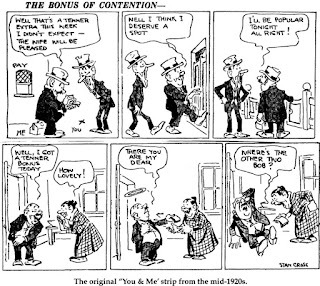 Fig.2Smith's Weekly was a staunchly nationalistic newspaper which traded on its working-class appeal and boasted an impressive roster of cartoonists whose work was considered a cornerstone of the newspaper’s popularity throughout the 1920s (Note #6). Their leading cartoonist was the American-born Stan Cross (1888-1977), who was given samples of the American comic strip, The Gumps, and instructed to devise a similar feature for Smith’s Weekly. Cross responded with You & Me, which became Australia’s first weekly newspaper comic strip upon its debut in August 1920 (Fig.2). The series focused on the portly Mr Pott and his lanky mate, “Whalesteeth”, whose barroom bonhomie frequently degenerated into violent arguments over politics, religion, and other topical issues. Cross ably transferred the domestic situation-comedy premise of The Gumps to a recognisably Australian setting, filtered through a distinctive “Aussie” vernacular, which saw the strip become a mainstay of Smith’s Weekly for twenty years.
Fig.2Smith's Weekly was a staunchly nationalistic newspaper which traded on its working-class appeal and boasted an impressive roster of cartoonists whose work was considered a cornerstone of the newspaper’s popularity throughout the 1920s (Note #6). Their leading cartoonist was the American-born Stan Cross (1888-1977), who was given samples of the American comic strip, The Gumps, and instructed to devise a similar feature for Smith’s Weekly. Cross responded with You & Me, which became Australia’s first weekly newspaper comic strip upon its debut in August 1920 (Fig.2). The series focused on the portly Mr Pott and his lanky mate, “Whalesteeth”, whose barroom bonhomie frequently degenerated into violent arguments over politics, religion, and other topical issues. Cross ably transferred the domestic situation-comedy premise of The Gumps to a recognisably Australian setting, filtered through a distinctive “Aussie” vernacular, which saw the strip become a mainstay of Smith’s Weekly for twenty years.
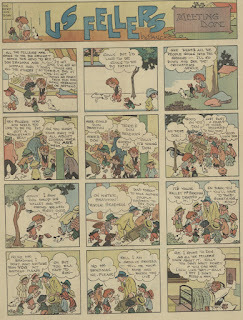 Fig.3It took a red-haired urchin named Ginger Meggs to prove beyond doubt comic strips’ potential value to Australian newspapers. Ginger Meggs was a minor character in Us Fellers, created by James Bancks (1889-1952) for Sydney’s Sunday Sun in November 1921. Meggs, who shirked homework in favour of racing billycarts and getting into fights, gradually became the leading character. Us Fellers (subsequently renamed
Ginger Meggs
) captured the everyday argot of Australian children, but its successful placement with newspapers in Britain, Europe, and the United States during the 1920s suggested that the series’ appeal was universal (Fig.3). Ginger Meggs became the undisputed star of Australian comics, appearing in the annual Sunbeams Book series (1924-1951), and on cinema screens in Those Terrible Twins (1925) (Note #7).
Fig.3It took a red-haired urchin named Ginger Meggs to prove beyond doubt comic strips’ potential value to Australian newspapers. Ginger Meggs was a minor character in Us Fellers, created by James Bancks (1889-1952) for Sydney’s Sunday Sun in November 1921. Meggs, who shirked homework in favour of racing billycarts and getting into fights, gradually became the leading character. Us Fellers (subsequently renamed
Ginger Meggs
) captured the everyday argot of Australian children, but its successful placement with newspapers in Britain, Europe, and the United States during the 1920s suggested that the series’ appeal was universal (Fig.3). Ginger Meggs became the undisputed star of Australian comics, appearing in the annual Sunbeams Book series (1924-1951), and on cinema screens in Those Terrible Twins (1925) (Note #7).In 1927, the Auckland Star published one of New Zealand’s first comic strips, The Tee Wees’ Adventures, a charming “bush fairy” serial by D. Price (Fig.4). This was followed in the early 1930s by two comparable series, each illustrated by female artists: Jocelyn Harrison-Smith’s Ngaio and her Magic Paddle and Avis Acres’ The Adventures of Tink and Wink, the Star Babies (Note #8). Their frequent use of Maori language and iconography demonstrated how Australasian cartoonists frequently drew on indigenous cultures to differentiate their work from British and American comic strips.
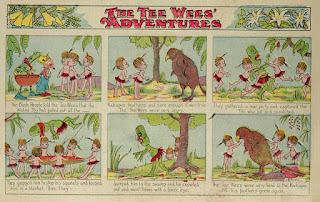 Fig.4
Fig.4
New Zealand’s relatively small publishing industry forced many local cartoonists to cross the Tasman Sea to Australia in search of work, where some would make an indelible contribution to Australian comics throughout the 1920s and 1930s. One notable expatriate artist was Noel Cook (1896-1980), who drew cartoons for the New Zealand Observer, before migrating to Sydney, where he contributed illustrations to The Bulletin and Smith’s Weekly. In 1923, Cook produced Peter and all the Roving Folk for Sydney’s Sunday Times, considered by some to be the world’s first science-fiction comic strip (Note #9).
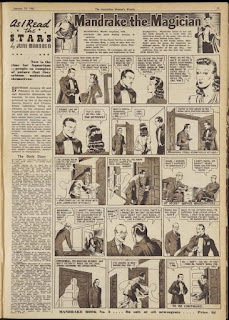 Fig.5Women’s magazines played a pivotal role in cultivating the public’s taste for adventure-serial comic strips.
The Australian Women's Weekly
unveiled a new American series, Mandrake the Magician, in December 1934 (Fig.5).
The Australian Woman’s Mirror
followed suit with its equivalent American comic-strip hero, The Phantom, in September 1936. Both series, created by author Lee Falk (1911-1999), were sold throughout Australasia by the Sydney-based Yaffa Syndicate, which, as the regional representative for King Features Syndicate (US), offered back-dated American comic strips to local clients at artificially low prices (The company sold Mandrake the Magician to the Women’s Weekly for just A£5.00 per full-page episode) (Note #10). Coupled with the perceived dearth of equivalent local content, this pricing strategy allowed American comic strips to gradually dominate the Australasian newspaper market by the late 1930s.
Fig.5Women’s magazines played a pivotal role in cultivating the public’s taste for adventure-serial comic strips.
The Australian Women's Weekly
unveiled a new American series, Mandrake the Magician, in December 1934 (Fig.5).
The Australian Woman’s Mirror
followed suit with its equivalent American comic-strip hero, The Phantom, in September 1936. Both series, created by author Lee Falk (1911-1999), were sold throughout Australasia by the Sydney-based Yaffa Syndicate, which, as the regional representative for King Features Syndicate (US), offered back-dated American comic strips to local clients at artificially low prices (The company sold Mandrake the Magician to the Women’s Weekly for just A£5.00 per full-page episode) (Note #10). Coupled with the perceived dearth of equivalent local content, this pricing strategy allowed American comic strips to gradually dominate the Australasian newspaper market by the late 1930s.To be continued in 'Antipodean Currents', Part 3
Image Sources: Fig.1: (Pikitia Press) ; Fig.2: (The LaTrobe Journal); Fig.3: (20th Century Danny Boy); Fig.4: (From Earth's End); Fig.5: (Trove/National Library of Australia, via Pinterest)
Note #1: John Ryan, Panel by Panel: A History of Australian Comics (Stanmore, NSW: Cassell Australia, 1979), p.13.
Note #2: Ian Gordon, ‘From The Bulletin to Comics: Comic Art in Australia 1890-1950’, Bonzer: Australian Comics 1900-1990s, Annette Shiell, Ed. (Redhill South, VIC: Elgua Media, 1998), pp.2-3.
Note #3: K.S Inglis, ‘The Daily Papers’, Australian Civilization: A Symposium, Peter Coleman, Ed. (Melbourne: F.W. Cheshire, 1962), p.152.
Note #4: R.B. Walker, Yesterday’s News: A History of the Newspaper Press in New South Wales from 1920 to 1945 (Sydney: Sydney University Press, 1980), p.36.
Note #5: Ryan, Panel by Panel, p.57
Note #6: George Blaikie, Remember Smith’s Weekly? (Adelaide: Rigby Limited, 1966), pp.3, 55.
Note #7: Lindsay Foyle, The Most Important Boy in Australia: 75 Years of Ginger Meggs (Strawberry Hills, NSW: Australian Black & White Artists’ Club).
Note #8: Adrian Kinnaird, From Earth’s End: The Best of New Zealand Comics (Auckland: Godwit Books/Random House New Zealand, 2013), p.13.
Note #9: Tim Bollinger, ‘Comics and Graphic Novels – Early Years of Comics, 1900s to 1940s’, Te Ara - The Encyclopedia of New Zealand (4 March 2014) .
Note #10: Denis O’Brien, The Weekly (Ringwood, VIC: Penguin Books Australia, 1982), p.55.
June 3, 2021
Antipodean Currents: Comic Art in Australia and New Zealand (Part 1)
I originally wrote 'Antipodean Currents' in 2016, after being commissioned to write a brief "layman's history" of comic art in Australian and New Zealand from the late 19th century to the present day. It was originally intended for an academic essay collection, but the project was eventually cancelled, and it never saw print. I subsequently made an illustrated PDF version of this essay available on my Academia.edu page, but this was only available to Academia.edu subscribers. As I've had numerous academics and comic fans/historians ask me to send them copies over the years, I've decided to publish it over several installments on the Comics Down Under blog and make it available to a wider audience.
I hope you'll enjoy reading the first installment of "Antipodean Currents".
- Kevin Patrick
Introduction
In 1949, the Australian cartoonist Syd Nicholls (1896-1977) exhorted booksellers and newsagents to ‘give preference’ to his company’s range of ‘all-Australian comics’. Nicholls’ publications, including Middy Malone’s Magazine (Fig.1) and Fatty Finn’s Comic, were, he claimed, ‘clean, wholesome books free from foreign slang and idiom … written and produced by Australian craftsmen’ (Note #1). Nicholls’ plea distilled the considerable challenges that confronted generations of cartoonists from Australian and New Zealand, who have strived to create distinctively “antipodean” comic strips and comic magazines, often in the face of overwhelming competition from their foreign counterparts.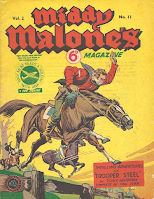 Figure 1
Figure 1Despite being situated on the geographic periphery of international comics culture, Australia and New Zealand have been historically exposed to first British, then American traditions and trends in comic art. The cultural and economic dominance of Anglo-American comics was achieved through the widespread circulation of imported comic magazines and syndicated comic strips throughout Australasia, where comparatively small populations have inhibited the development of indigenous comics industries.
Nevertheless, Australian and New Zealand cartoonists have jointly forged a unique regional comics idiom, which duly acknowledges their international influences, while reflecting their respective national cultures. To outside observers, neither Australian nor New Zealand comics seem to convey a distinctive national “style” in the same way that Franco-Belgian bande dessinée or Japanese mangaclearly do – a situation which has been exacerbated by their relatively limited international exposure. But to dismiss comics from Australia and New Zealand as pale imitations of their Anglo-American counterparts is to overlook their distinctive, yet subtle, graphic inflection, and the unique historical circumstances which informed their creation.
Cartoon Art in the Colonial EraThroughout the nineteenth century, Australia and New Zealand remained wedded to “British” notions of art, literature, music, and theatre, which helped bind these nations together under the aegis of empire. British magazines, with their mixture of news, stories, illustrations, and advertisements, played a key role in this process of cultural transmission. They also provided models for the earliest Australasian magazines that made extensive use of cartoons and antecedents of the modern comic strip.
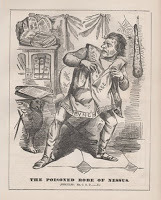 Figure.2Melbourne Punch, launched in 1855, was, as its name suggests, strongly indebted to the London Punch, which pioneered the satirical illustrated magazine format a decade earlier. The colonial version’s graphic tone was set by the Russian-born artist, Nicholas Chevalier (1828-1902), hailed as the first ‘comic artist’ to work in Australia (Fig.2) (Note #2). However, Chevalier’s work was more illustrative than comical, and rarely engaged in the kind of gross exaggeration and caricature commonly associated with modern-day cartoonists.
Figure.2Melbourne Punch, launched in 1855, was, as its name suggests, strongly indebted to the London Punch, which pioneered the satirical illustrated magazine format a decade earlier. The colonial version’s graphic tone was set by the Russian-born artist, Nicholas Chevalier (1828-1902), hailed as the first ‘comic artist’ to work in Australia (Fig.2) (Note #2). However, Chevalier’s work was more illustrative than comical, and rarely engaged in the kind of gross exaggeration and caricature commonly associated with modern-day cartoonists. His successor, the London-born Thomas Carrington (1843-1918), had a far greater facility for humorous illustration and excelled at political caricature. He began drawing chiaroscuro-styled comic strips for Melbourne Punch in the 1870s, which juxtaposed dialogue and illustrations within each panel. While this approach brought them closer to present-day comic strip narrative techniques, Carrington’s illustrations still relied on typeset captions and dialogue beneath each panel to fully convey the story (Note #3).
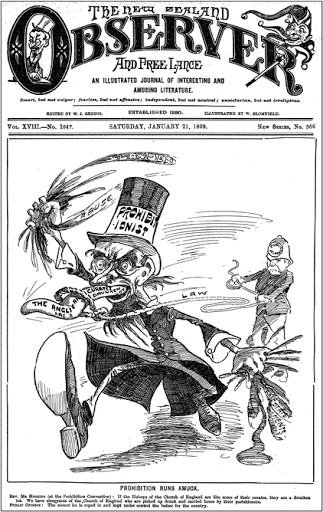 Figure 3By the 1890s, the costly and laborious wood-block engraving process used to prepare artwork for publication gradually gave way to photo-engraving techniques, thus allowing newspapers to give greater prominence to cartoons and comic strips, which could be reproduced with greater clarity in a variety of sizes. The New Zealand Graphic and Ladies’ Journal began running front-page cartoons in 1892, many of them penned by Ashley Hunter (1854-1932). The New Zealand Observer and Free Lance followed suit in 1893, capitalising on the bustling, energetic style of its resident cartoonist, William (“Blo”) Blomfield (1866-1938), considered by some to be the harbinger of modern political cartooning in New Zealand (Fig.3) (Note #4).
Figure 3By the 1890s, the costly and laborious wood-block engraving process used to prepare artwork for publication gradually gave way to photo-engraving techniques, thus allowing newspapers to give greater prominence to cartoons and comic strips, which could be reproduced with greater clarity in a variety of sizes. The New Zealand Graphic and Ladies’ Journal began running front-page cartoons in 1892, many of them penned by Ashley Hunter (1854-1932). The New Zealand Observer and Free Lance followed suit in 1893, capitalising on the bustling, energetic style of its resident cartoonist, William (“Blo”) Blomfield (1866-1938), considered by some to be the harbinger of modern political cartooning in New Zealand (Fig.3) (Note #4).
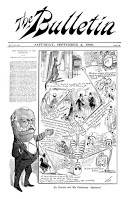 Figure 4The Bulletin became Australia’s first national magazine to use photo-engraving to enliven its visual presentation, especially in its use of cartoons and illustrations. Although The Bulletin prided itself on publishing distinctively “rustic” Australian authors, such as Henry Lawson and A.B “Banjo” Paterson, its editor William Traill (1843-1902) turned instead to American journals like Puck and Judge for the latest trends in graphic design and illustration. In 1882, Traill recruited Livingston (“Hop”) Hopkins (1846-1927), then working for The New York Daily Graphic, to join The Bulletin (Fig.4). Traill subsequently induced Philip May (1864-1903), a freelance London cartoonist, to make the trip to Sydney, where he worked for The Bulletin from 1886-89 (Note #5).
Figure 4The Bulletin became Australia’s first national magazine to use photo-engraving to enliven its visual presentation, especially in its use of cartoons and illustrations. Although The Bulletin prided itself on publishing distinctively “rustic” Australian authors, such as Henry Lawson and A.B “Banjo” Paterson, its editor William Traill (1843-1902) turned instead to American journals like Puck and Judge for the latest trends in graphic design and illustration. In 1882, Traill recruited Livingston (“Hop”) Hopkins (1846-1927), then working for The New York Daily Graphic, to join The Bulletin (Fig.4). Traill subsequently induced Philip May (1864-1903), a freelance London cartoonist, to make the trip to Sydney, where he worked for The Bulletin from 1886-89 (Note #5). Ironically, these two émigré cartoonists created many of the visual tropes that would define Australian “bush humour” cartoons and comic strips for decades to come – the slow-witted farmhands, the itinerant workers (“swaggies”) and the horse-and-buggy parsons who inhabited the stark, treeless Australian outback of the popular imagination. May developed an innovative series of ‘pantomime’ cartoons, which relayed a humorous story (without using dialogue) through a sequential series of images, enclosed in a single panel (Note #6). Between them, Hopkins and May set new standards for cartooning in Australia and cemented the magazine's reputation for producing some of the world’s best “black & white” illustrators.
As the 1890s drew to a close, Australasian cartoonists were confidently developing a distinctive, regional approach to graphic humour. While their editorial focus on domestic politics and social issues was undeniably “local”, their storytelling techniques brought them into alignment with international trends in comic-strip illustration. The creative, cultural, and economic nexus between Australasian comics, and their British and American counterparts was by now firmly established, and would only grow stronger in the opening decades of the twentieth century.
To be continued in 'Antipodean Currents', Part 2
Image Sources: Fig.1 (AusReprints); Fig.2 (Sebra Prints); Fig.3 (Papers Past/National Library of New Zealand); Fig.4 (The Bulletin Covers)
Note #1: Fatty Finn Publications (advt.), ‘Mr. Newsagent – Why not give preference to all Australian comics’, Ideas – For Stationers, Booksellers, Newsagents, Libraries, Fancy Goods, 29 (15 September 1949), 802.
Note #2: Vane Lindesay, The Inked-in Image: A Social and Historical Survey of Australian Comic Art (Richmond, VIC: Hutchinson Group Australia, 1979), p.3.
Note #3: John Ryan, Panel by Panel: A History of Australian Comics (Stanmore, NSW: Cassell Australia, 1979), p.11.
Note #4: Ian F. Grant, ‘Drawing the Line: A Short History of Editorial Cartooning in New Zealand’, Turnbull Library Record, 29 (2006), 8.
Note #5: Patricia Rolfe, The Journalistic Javelin: An Illustrated History of The Bulletin (Sydney: Wildcat Press, 1979), pp.44-48.
Note #6: Ryan, ibid, p.11.
May 30, 2021
Recent Writings About Australian Comics (2017-2021)
One of the reasons why I have only made infrequent blog posts during the last 12-18 months is that I have been preoccupied with various academic/scholarly writing projects. "Publish or perish" is the commonly heard mantra repeated to "early career researchers" like myself, as your chances of securing postdoctoral research grants and/or semi-secure full-time employment is based in part on your academic writing output. Well, that's the theory, anyway - the reality, for me at least, has been far from encouraging. Despite being told on numerous occasions that I have produced an impressive body of work (relative to opportunity) - spanning academic monographs, scholarly book chapters and peer-reviewed journal articles - I am no closer to achieving these career goals since I completed my doctoral thesis at Monash University nearly seven years ago. But this is the professional reality confronting even the best and brightest scholars in the arts & humanities disciplines, both here in the United States (where I currently live and presently teach at Fordham University), and in Australia, where I worked as a sessional university tutor for several years before moving abroad.
Nevertheless, I am proud of the work I've done in the emerging field of "comics studies" in the last five years, so I'd like to take this opportunity to share news and information about my recent writings on Australian comics, which I will hope interest readers of this blog.
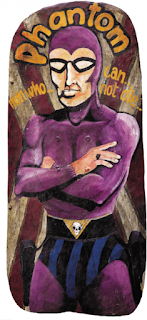
Man Who Cannot Die: Phantom Shields of the New Guinea Highlands (Jonathan Fogel, Ed., Boylan & Philips, 2021) is a beautifully presented art book, which documents the representation of the Phantom on ceremonial and tribal war shields in the Western Highlands of Papua New Guinea. This American comic strip character, created by author Lee Falk and illustrator Ray Moore in 1936, has always had a devoted following throughout Australia and the Oceanic region, but this remarkable phenomenon of Phantom as a tribal art icon may come as a surprise to even the most ardent Phantom "phan". I contributed a chapter to this book, titled "The Phantom's Oceanic Odyssey", which explains how Papuan audiences were first exposed to The Phantom comic strip in the 1970s through the pages of Wantok, a fortnightly Catholic newspaper printed in Tok Pisin, a widely-spoken dialect that is one of Papua New Guinea's three official languages, alongside English and Hiri Motu. Copies can be ordered directly from the publisher via the website link listed above, but Australian readers can also order copies via Frew Publications, which publishes the Australian edition of The Phantom comic book.
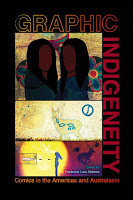 Graphic Indigeneity: Comics in the Americas and Australasia
(Frederick Luis
Graphic Indigeneity: Comics in the Americas and Australasia
(Frederick LuisAldama, Ed., University Press of Mississippi, 2020) is a collection of scholarly essays which examines how mainstream (American) comics have portrayed indigenous peoples in the Americas, and how present-day indigenous storytellers are using comics to reclaim their narrative, through documenting the complexities of their shared histories, and conveying the realities of their present-day existence. My contribution to this collection, titled "The Wisdom of the Phantom: The Secret Life of Australia's Indigenous Superhero", looks at how Australian government agencies (such as the Australian Electoral Commission and Family Court of Australia) have capitalised on the Phantom's popularity among indigenous Australian audiences by using the character in a range of educational comics and other materials devoted to such topics as voting registration, divorce and family custody disputes, and sexually transmitted diseases.
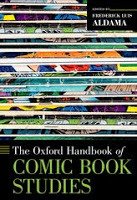 The Oxford Handbook of Comic Book Studies
(Frederick Luis Aldama, Ed., Oxford University Press, 2020) is surely proof positive that comic books have now acquired academic legitimacy, even if there is residual & institutional uncertainty about whether comics should be studied as either a form of literature, or as a visual artform - or both, for that matter. This wide-ranging collection of essays considers the formal/aesthetic parameters of the comic book medium, the formation and evolution of the comics studies discipline, media and merchandise adaptations of comic book characters, and broader political/social issues addressed in comic books and graphic novels, past and present. My contribution to this volume, titled "Radical Graphics: Australia's Second-Phase Comics", briefly recounts the history of academic studies of comic books in Australia (beginning at the height of the "anti-comic book" outcry of the late 1940s/early 1950s), before charting the evolution of the so-called "underground comix" and "small press/alternative comics" movements of the 1970s and 1980s. It also discusses the formation of organised Australian comics fandom throughout this period, and how the emerging network of comic fanzines, specialty comics retailers and comic-book conventions facilitated the growth of "New Wave" Australian comics.
The Oxford Handbook of Comic Book Studies
(Frederick Luis Aldama, Ed., Oxford University Press, 2020) is surely proof positive that comic books have now acquired academic legitimacy, even if there is residual & institutional uncertainty about whether comics should be studied as either a form of literature, or as a visual artform - or both, for that matter. This wide-ranging collection of essays considers the formal/aesthetic parameters of the comic book medium, the formation and evolution of the comics studies discipline, media and merchandise adaptations of comic book characters, and broader political/social issues addressed in comic books and graphic novels, past and present. My contribution to this volume, titled "Radical Graphics: Australia's Second-Phase Comics", briefly recounts the history of academic studies of comic books in Australia (beginning at the height of the "anti-comic book" outcry of the late 1940s/early 1950s), before charting the evolution of the so-called "underground comix" and "small press/alternative comics" movements of the 1970s and 1980s. It also discusses the formation of organised Australian comics fandom throughout this period, and how the emerging network of comic fanzines, specialty comics retailers and comic-book conventions facilitated the growth of "New Wave" Australian comics.
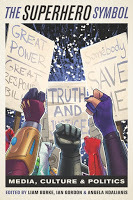 The Superhero Symbol: Media, Culture & Politics
(Liam Burke, Ian Gordon & Angela Ndalianis, Eds., Rutgers University Press, 2019) is a multidisciplinary collection of essays which examines different facets of the superhero genre that has come to dominate both the American comics industry and television/film sectors in recent decades. The comic book medium, at least within the Anglo-American, English-speaking world, is inextricably linked to the superhero genre. This volume features scholarly essays, as well as interviews with leading comics practitioners, that examine the commercial exploitation of superheroes in other media, the symbolic and ideological dimensions of the superhero genre, and how superheroes have articulated aspects of national identity throughout the world. My essay, titled "Age of the Atoman: Australian Superhero Comics and Cold War Modernity", looks at how Australian cartoonists promoted their superheroes as American, rather than Australian characters. This tactic that acknowledged the commercial realities of Australia's post-war comics industry, and reflected the enduring legacy of Australia's "cultural cringe" - the ingrained belief that Australia's cultural achievements were inherently inferior to their British or American equivalents.
The Superhero Symbol: Media, Culture & Politics
(Liam Burke, Ian Gordon & Angela Ndalianis, Eds., Rutgers University Press, 2019) is a multidisciplinary collection of essays which examines different facets of the superhero genre that has come to dominate both the American comics industry and television/film sectors in recent decades. The comic book medium, at least within the Anglo-American, English-speaking world, is inextricably linked to the superhero genre. This volume features scholarly essays, as well as interviews with leading comics practitioners, that examine the commercial exploitation of superheroes in other media, the symbolic and ideological dimensions of the superhero genre, and how superheroes have articulated aspects of national identity throughout the world. My essay, titled "Age of the Atoman: Australian Superhero Comics and Cold War Modernity", looks at how Australian cartoonists promoted their superheroes as American, rather than Australian characters. This tactic that acknowledged the commercial realities of Australia's post-war comics industry, and reflected the enduring legacy of Australia's "cultural cringe" - the ingrained belief that Australia's cultural achievements were inherently inferior to their British or American equivalents.
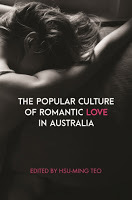 The Popular Culture of Romantic Love in Australia (Hsu-Ming Teo, Ed., Australian Scholarly Publishing, 2017). This volume examines the rituals and representations of romantic love in Australian society, from the mid-19th century to the present day. There is extensive discussion about the portrayal of romantic love in Australian cinema, television, paperback novels, and popular music. My essay, titled "Intimate Confessions: The Rise and Fall of Romance Comic Books in Australia", charts the controversial history of romance comic books in Australia, a field dominated by licensed reprints of American titles, but which also provided openings for local creators, including Moira Bertram, one of the few women to enjoy a lengthy and successful career in Australian comics. I am especially proud of this chapter, because it really does break new ground in documenting the history of Australian comics, by focusing on the neglected romance comics genre, which was responsible for broadening the historically juvenile audience for comics, by addressing such topics as romantic love, courtship, sexual intimacy and marriage that appealed to teenage girls and young women alike, who made these comics bestsellers.
The Popular Culture of Romantic Love in Australia (Hsu-Ming Teo, Ed., Australian Scholarly Publishing, 2017). This volume examines the rituals and representations of romantic love in Australian society, from the mid-19th century to the present day. There is extensive discussion about the portrayal of romantic love in Australian cinema, television, paperback novels, and popular music. My essay, titled "Intimate Confessions: The Rise and Fall of Romance Comic Books in Australia", charts the controversial history of romance comic books in Australia, a field dominated by licensed reprints of American titles, but which also provided openings for local creators, including Moira Bertram, one of the few women to enjoy a lengthy and successful career in Australian comics. I am especially proud of this chapter, because it really does break new ground in documenting the history of Australian comics, by focusing on the neglected romance comics genre, which was responsible for broadening the historically juvenile audience for comics, by addressing such topics as romantic love, courtship, sexual intimacy and marriage that appealed to teenage girls and young women alike, who made these comics bestsellers.
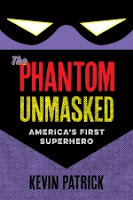 The Phantom Unmasked: America's First Superhero
(University of Iowa Press, 2017) was my first academic monograph, and the first book-length academic study of the Phantom, the American comic-strip character which provided the visual template for comic-book superheroes, and who predates the 1938 debut of Superman by two years. The Phantom Unmasked is based on my doctoral thesis (Monash University, 2014), which charted the production and dissemination of The Phantom comic strip (and subsequent comic magazines) in three international markets - Australia, Sweden and India - where the character has remained incredibly popular with generations of readers in each of these countries since the 1930s. This book features insights from key creative personnel associated with The Phantom comics franchise, and uses findings from an international survey of nearly 600 Phantom "phans" to explain why America's first superhero, largely forgotten or ignored by American audiences, has enjoyed unrivalled levels of international popularity. Don't believe me? Then check out the video interview I recorded for Fordham News back in 2018, and I'll 'give you the drum' about The Ghost Who Walks myself!
The Phantom Unmasked: America's First Superhero
(University of Iowa Press, 2017) was my first academic monograph, and the first book-length academic study of the Phantom, the American comic-strip character which provided the visual template for comic-book superheroes, and who predates the 1938 debut of Superman by two years. The Phantom Unmasked is based on my doctoral thesis (Monash University, 2014), which charted the production and dissemination of The Phantom comic strip (and subsequent comic magazines) in three international markets - Australia, Sweden and India - where the character has remained incredibly popular with generations of readers in each of these countries since the 1930s. This book features insights from key creative personnel associated with The Phantom comics franchise, and uses findings from an international survey of nearly 600 Phantom "phans" to explain why America's first superhero, largely forgotten or ignored by American audiences, has enjoyed unrivalled levels of international popularity. Don't believe me? Then check out the video interview I recorded for Fordham News back in 2018, and I'll 'give you the drum' about The Ghost Who Walks myself!Even though I remain (justifiably) pessimistic about my long-term academic employment prospects, I still enjoy teaching, especially now that I've had the chance to design and deliver my own course, Comic Books and American Culture, at Fordham University for the last two years. And there are still other topics about Australian comics history that I hope to explore in different academia outlets in years to come, which I will share here as well.
November 30, 2020
Paperboy, Collins Street, Melbourne 1957
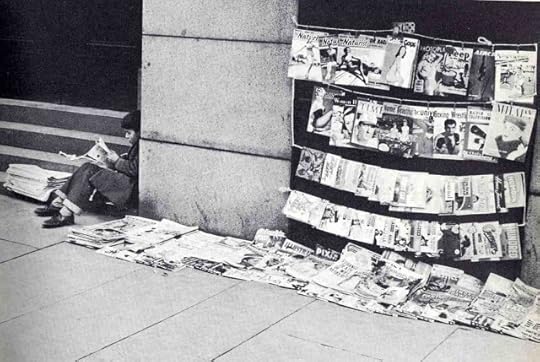
This is a portrait of a paperboy in Collins Street, Melbourne, taken by photographer Mark Strizic. It was reproduced in a book of Strizic's photographs, "Melbourne: A Portrait", published by Georgian House in 1960. Mark Strizic (pictured below in 1958) was born in Berlin, Germany, in 1928, but following Hitler's rise to power in 1933, his family fled to Zagreb, Yugoslavia (now Croatia) the following year. He subsequently made his way to Austria at the end of the war to escape the Communist regime in Yugoslavia, and emigrated to Australia in 1950.
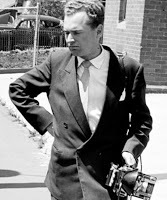 After working as a clerk for Victorian Railways, and studying physics part-time at the Royal Melbourne Institute of Technology, he embarked on a full-time career as a photographer in 1957, working for institutions like the National Gallery of Victoria, as well as corporate clients, including BHP and the McPherson's confectionery firm.
After working as a clerk for Victorian Railways, and studying physics part-time at the Royal Melbourne Institute of Technology, he embarked on a full-time career as a photographer in 1957, working for institutions like the National Gallery of Victoria, as well as corporate clients, including BHP and the McPherson's confectionery firm. This photo is of special interest to Australian comic book fans, collectors and historians, and to anyone interested in Australian media history, as it provides a fascinating snapshot of the range of magazines and books that Australians were reading and buying in the late 1950s.
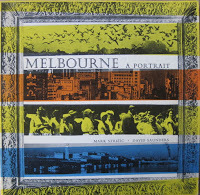 You'll need to download this image to examine it properly, but in the bottom right-hand corner of the boy's makeshift newsstand, you can see copies of several Australian-drawn comics. Close examination of the photo reveals there are copies of the third issue of "The Panther" (drawn by Paul Wheelahan), which indicates this photo was taken around July 1957. Also visible in this photo are copies of "Sir Falcon" (drawn by Peter Chapman) and "Smoky Dawson" (drawn Andrea Bresciani), displayed on the footpath, which are held in place on the ground by paperback books.I uploaded this image to the Old Australian Pre-Decimal Comics up to 1966 Facebook group on 25 October, and invited members to see if they could identify any of the other comics visible in this photograph. My fellow comic-book sleuths tapped their collective memory banks and trawled the furthest reaches of the internet, and managed to successfully identify most of the comics displayed on this young boy's makeshift newsstand. The fact that they could do so, based on nothing more than a partial glimpse of a cover, is testimony to their dedication, knowledge and expertise.
You'll need to download this image to examine it properly, but in the bottom right-hand corner of the boy's makeshift newsstand, you can see copies of several Australian-drawn comics. Close examination of the photo reveals there are copies of the third issue of "The Panther" (drawn by Paul Wheelahan), which indicates this photo was taken around July 1957. Also visible in this photo are copies of "Sir Falcon" (drawn by Peter Chapman) and "Smoky Dawson" (drawn Andrea Bresciani), displayed on the footpath, which are held in place on the ground by paperback books.I uploaded this image to the Old Australian Pre-Decimal Comics up to 1966 Facebook group on 25 October, and invited members to see if they could identify any of the other comics visible in this photograph. My fellow comic-book sleuths tapped their collective memory banks and trawled the furthest reaches of the internet, and managed to successfully identify most of the comics displayed on this young boy's makeshift newsstand. The fact that they could do so, based on nothing more than a partial glimpse of a cover, is testimony to their dedication, knowledge and expertise.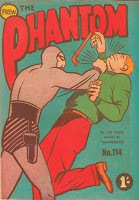 A copy of "The Phantom" no.114 is displayed to the right of "The Panther", while a copy of "Felix the Cat" no.13 is partly visible above the (as yet unidentified) edition of "Sir Falcon". Visible directly above "The Panther" is a copy of Horwitz Publications' US-reprint crime title, "Tales of Justice" no.4. It's also been suggested that the comic seen directly above "Sir Falcon" and "Felix the Cat" is "Popular Pictorial" no.11, featuring 'Ben Bowie and his Mountain Men'.
A copy of "The Phantom" no.114 is displayed to the right of "The Panther", while a copy of "Felix the Cat" no.13 is partly visible above the (as yet unidentified) edition of "Sir Falcon". Visible directly above "The Panther" is a copy of Horwitz Publications' US-reprint crime title, "Tales of Justice" no.4. It's also been suggested that the comic seen directly above "Sir Falcon" and "Felix the Cat" is "Popular Pictorial" no.11, featuring 'Ben Bowie and his Mountain Men'.Just above the footpath display, there is a group of comic books draped over a rope strung across a display board. To date, the Pre-Decimal Comics group members have identified copies of K.G. Murray's "Hundred Comic Monthly" no.9, "Century Comic Monthly" no.13, and the debut issue of "Magic Moment Romances" series.
There are several editions of the "Classics Illustrated" series, issued by Strato Publications (UK), on the bottom row of the upright board display. These include issues #5 ("Moby Dick"), #8 ("The Odyssey"), and #46 ("Kidnapped"). There is also a copy of the Young's Merchandising title, "The Fighting Army and Navy Comic", visible on the far left of the row of magazines directly above the "Classics Illustrated" titles. There may be other comics on this same row of magazines, but I can't make out any further titles.
The photo also shows a fascinating variety of imported and locally-published magazines, including several issues of the nudist/sunbather magazine, "The Naturist", "Practical Motorist and Motor Cyclist", "Radio Television and Hobbies", "Motor Racing and Motor Rally", and three local pin-up magazines, "Peep - For Men Only", "Gals and Gags", and "Man Junior". Imported copies of "Time" and "Newsweek' magazine are also clearly visible in this photograph. Many of the Australian magazines identified by the group's members bore a July 1957 cover date, which suggests this photo may have been taken sometime in mid/late June 1957.
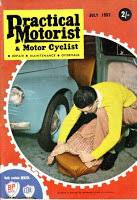
James Zanotto, curator of the AusReprints website, has created a dedicated page listing all the identified comics and magazines featured in this photograph, which can be viewed here. This list will be updated as more titles are identified - and readers of this blog are definitely encouraged to try their hand at spotting some of the titles missing from the AusReprints list.
Makeshift newsstands like one this dotted the busy intersections and side-streets of Melbourne during the 1950s, offering commuters a rich variety of reading material to choose from to help alleviate the tedium of long train, tram or bus trips home during the weekday rush-hour. Even small street corner newsstands like the one captured in this photograph offered newspapers, magazines and paperback novels that catered for a wide variety of tastes and interests, from aviation and home decoration, to movie stars and professional sports.
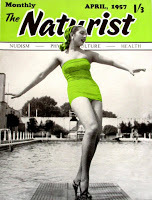 Strizic's photographs of Melbourne's skyline, streetscapes, everyday people and prominent public figures capture the city during a period of controversial renovation and renewal, with many older, Victorian & Edwardian-era buildings being demolished to make way for more modern, contemporary structures and public places. In 2007, the State Library of Victoria acquired Strizic's entire archive of 5,000 photographic negatives, slides and transparencies (You can search for many of these images on the State Library of Victoria's online catalogue) He died in Wallan, Victoria, in 2012.You can view a selection of Strizic's photographs of Melbourne's streetscapes, and portraits of notable artists, at the National Gallery of Victoria's online collection
Strizic's photographs of Melbourne's skyline, streetscapes, everyday people and prominent public figures capture the city during a period of controversial renovation and renewal, with many older, Victorian & Edwardian-era buildings being demolished to make way for more modern, contemporary structures and public places. In 2007, the State Library of Victoria acquired Strizic's entire archive of 5,000 photographic negatives, slides and transparencies (You can search for many of these images on the State Library of Victoria's online catalogue) He died in Wallan, Victoria, in 2012.You can view a selection of Strizic's photographs of Melbourne's streetscapes, and portraits of notable artists, at the National Gallery of Victoria's online collection
November 25, 2020
Vale - Yaroslav Horak (1927-2020)
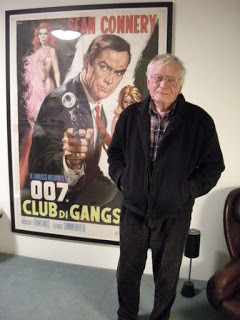 The Australian Cartoonists' Association announced on 25 November 2020 that acclaimed Australian comic-strip artist, Yaroslav Horak, had passed away after a decade-long struggle with Alzheimer's Disease. The following blog post is a revised and expanded of my article on Horak's life and work, which was published as 'Yaroslav Horak: The Man Behind the Masks', in Giant Size Phantom, no.9 (May 2019).
The Australian Cartoonists' Association announced on 25 November 2020 that acclaimed Australian comic-strip artist, Yaroslav Horak, had passed away after a decade-long struggle with Alzheimer's Disease. The following blog post is a revised and expanded of my article on Horak's life and work, which was published as 'Yaroslav Horak: The Man Behind the Masks', in Giant Size Phantom, no.9 (May 2019).Yaroslav Horak’s childhood reads like the dramatic scenario for one of the countless comic-book adventures he went on to draw for most of his adult life. He was born on 12 June 1927, in Harbin, Manchuria, where his father, Joseph, a Czech-born engineer, owned a successful manufacturing business. Joseph and his Russian wife, Zinaida, eventually joined the growing throng of European refugees who fled Harbin following the Japanese invasion of Manchuria in September 1931. Disturbed by the brutality of the occupying Japanese army, the Horak family left Manchuria on a steamship bound for Australia in July 1939.
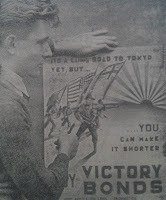 They settled in Sydney, where Yaroslav attended high school and subsequently took evening art classes at Sydney Technical College (You can read the Sydney News' 1944 profile about the youthful Yaroslav Horak - pictured at left - here). He soon turned his artistic flair to drawing comic-book features for Sydney’s thriving comic-magazine market. His first published work, “Grey Thorne, Counter Espionage Agent”, appeared in Frank Johnson Publications’ Gem Comics in 1947. Horak created his first recurring character, “Rick Davis, Special Correspondent”, as a supporting feature in H.J. Edwards’ top-selling Action Comic title. This was followed by “The Skyman”, which ran in both Action Comic and John Dixon’s Tim Valour Comic. This aviation-themed series was the first comic to carry the artist’s Anglicized by-line, “Larry Horak”.
They settled in Sydney, where Yaroslav attended high school and subsequently took evening art classes at Sydney Technical College (You can read the Sydney News' 1944 profile about the youthful Yaroslav Horak - pictured at left - here). He soon turned his artistic flair to drawing comic-book features for Sydney’s thriving comic-magazine market. His first published work, “Grey Thorne, Counter Espionage Agent”, appeared in Frank Johnson Publications’ Gem Comics in 1947. Horak created his first recurring character, “Rick Davis, Special Correspondent”, as a supporting feature in H.J. Edwards’ top-selling Action Comic title. This was followed by “The Skyman”, which ran in both Action Comic and John Dixon’s Tim Valour Comic. This aviation-themed series was the first comic to carry the artist’s Anglicized by-line, “Larry Horak”.
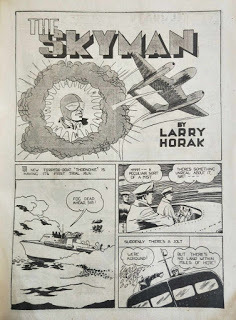
Syd Nicholls (1896-1977), creator of the much-loved Fatty Finnnewspaper comic strip, recruited Australia’s best young cartoonists to work on his small, but expansive range of “All-Australian” comic magazines. Horak joined their ranks in 1948, producing “Bob Arlen”, a motor-racing feature, together with the science-fiction serial, “Ripon – The Man Out of Space”, for Nicholls’ flagship title, Middy Malone Magazine. The latter series showcased some of Horak’s best work to date, but it was brought to a premature end following Nicholls’ decision to quit the comic-book field by the end of 1949.
Nevertheless, Sydney’s bustling comics industry continued to new offer outlets for talented, ambitious cartoonists keen to ply their skills in this lucrative market. Horak produced his first solo comic book, Mr Combat, for Elmsdale Publications in 1950, but his “globetrotting crime-buster” was cancelled after just three issues. He subsequently created “Chandor, Jungle Doctor” as a supporting feature for the Yarmak – Jungle King comic published by Young’s Merchandising.
Horak’s next venture established beyond doubt his reputation as an accomplished visual storyteller. Jet Fury was a masked aviator, who flew to global trouble-spots aboard the Comet, an “anti-gravity” jet that surpassed any other aircraft in the sky. The series, which began as a supporting feature in Michael Chance Comic, was in many respects a streamlined, updated version of Horak’s earlier “Skyman” strip. But the series’ emphasis on hi-tech action, beautifully realized by Horak’s dynamic artwork, proved so popular that Pyramid Publications rechristened the magazine Jet Fury Comic with its 16th issue in 1951.
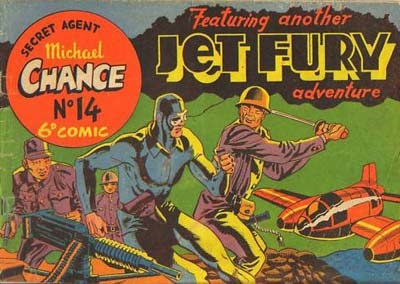
Horak relocated to Melbourne in 1953, and began working for Atlas Publications, which had acquired the comic-book rights to the American newspaper strip, Brenda Starr, Reporter, created by Dale Messick (1906-2005). However, the company handed the artistic reins to Horak with the 14th issue, who drew most of the lead stories until the series ceased publication in 1954. Horak’s art on Brenda Starr was already showing signs of the brisk, energetic style that would become his trademark “look” in decades to come, brilliantly complemented by his cinematic panel compositions.
Horak’s final series for Atlas Publications proved to be his most controversial. The Mask – The Man of Many Faces starred a mysterious, elusive crimefighter, who could alter his blank, skull-like face to resemble any man, living or dead, which allowed him to penetrate the secretive worlds of organized crime and international espionage in his pursuit of justice. The comic was an immediate success, but it ran afoul of Queensland’s Literature Board of Review, which objected to the character’s full-face mask, and imposed a state-wide sales ban on the comic, thus forcing Atlas Publications to reluctantly cancel the title with its third issue in 1954.
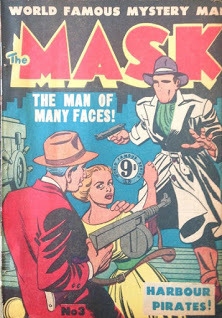
Disillusioned by the experience, Horak gradually withdrew from the comic-book industry and began focusing his energies on the more lucrative newspaper comic-strip field. Horak created history with his debut newspaper feature, "Captain Fortune", which became the first Australian comic strip to be adapted from a local television program. Captain Fortune was a children’s variety program, hosted by a fictitious mariner played by veteran stage and radio actor, Alan Herbert (1913-1966), which aired on ATN-7 between 1956-1961. Horak turned "Captain Fortune" into a suspenseful adventure comic aimed at adult readers, which appeared in Sydney’s Sun-Heraldnewspaper from December 1957 until July 1962.
Emboldened by this success, Horak created a new adventure comic strip, "Mike Steel, Desert Rider", for Woman’s Day magazine. The protagonist, Mike Steel, was a mounted trooper who brought law and order to the desert wilderness of Central Australia. The series, written by Woman’s Day editor Keith Findlay (under the pseudonym “Roger Rowe”), made its debut as a full-colour strip in August 1962, but was shortly converted into the black-and-white format that was retained until the series’ conclusion in January 1969.

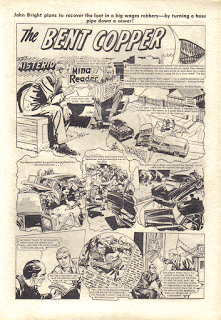 Horak moved to England in 1963, and began drawing strips for D.C. Thompson’s weekly adventure comic, The Victor. One of Horak's earliest known serials was 'Johny Hop', which chronicled the adventures of Constable Bill Lennox and his Aboriginal tracker companion, Wally Omes, in Outback Australia, and appeared in The Victor throughout July-September 1964. His subsequent serial, "The Bent Copper", was about ex-Scotland Yard detective John Bright, who sought revenge against the criminal who framed him for a crime he did not commit. "The Bent Copper" appeared in The Victor throughout July-August 1965.
Horak moved to England in 1963, and began drawing strips for D.C. Thompson’s weekly adventure comic, The Victor. One of Horak's earliest known serials was 'Johny Hop', which chronicled the adventures of Constable Bill Lennox and his Aboriginal tracker companion, Wally Omes, in Outback Australia, and appeared in The Victor throughout July-September 1964. His subsequent serial, "The Bent Copper", was about ex-Scotland Yard detective John Bright, who sought revenge against the criminal who framed him for a crime he did not commit. "The Bent Copper" appeared in The Victor throughout July-August 1965.Horak’s bold, dramatic style lent itself beautifully to the pocket-sized war comics that were captivating a new generation of British readers, who’d grown up in the shadow of World War Two. Between 1963-66, Horak drew nearly a dozen stories for the War Picture Library and Battle Picture Library series published by Fleetway Publications. These gritty, action-packed war stories – which were exported to Australia and New Zealand and published in translation throughout Western Europe – were in many ways the perfect subject for Horak, who displayed his command of black and white illustrative technique to brilliant effect. His final, belated contribution to the War Picture Library series – published as “The Curse” – appeared in 1971.
By this time, Horak had rented a studio above the El Vino wine bar in London’s Fleet Street, home to many of England’s leading newspapers, which became a magnet for countless journalists, writers and artists. Horak worked in the same building as the British author Peter O’Donnell (1920-2010), who wrote the comic-strip adaptation of Ian Fleming’s spy novel, Dr. No, for the Daily Express newspaper in 1958. O’Donnell, who later achieved worldwide fame as the creator of comic-strip heroine Modesty Blaise, nominated Horak to replace John McClusky (1925-2006) as the permanent artist on the James Bond comic strip, which had resumed publication in the Daily Expressin 1964 (The series recommenced after a two-year hiatus following the resolution of a contractual dispute between Ian Fleming and the British newspaper magnate, Lord Beaverbrook).
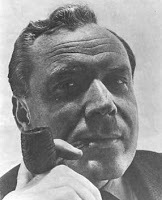
The American novelist and journalist Jim Lawrence (1918-1994) and Horak (pictured right, circa 1960s) made their joint debut on James Bond with their adaptation of “The Man with the Golden Gun”, which appeared in the Daily Expressthroughout 1966 (Two episodes are reproduced below). This marked the start of their decade-long collaboration, which saw them recast James Bond as a tough antihero, completely at odds with Roger Moore’s droll screen portrayal of the character, but who was in many ways closer to the spirit of Ian Fleming’s earliest “Bond” novels (There is an interesting discussion/analysis of Horak's work on the "James Bond" comic strip to be found on the Dave Karlen Original Art Blog, dating from August 2008).
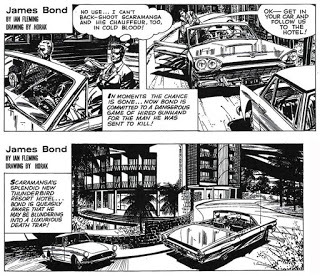
Horak worked and travelled throughout Europe for several years, before eventually returning to Sydney in 1975. Even after the Daily Express dropped the James Bondcomic strip in 1977, Horak and Lawrence continued to produce new James Bond stories for the Scandinavian market, where it continued to appear in newspapers and comic magazines until the mid-1980s. Ironically, a new Australian television show brought Horak back to the pages of Sydney’s Sun-Heraldnewspaper in 1980. Cop Shop was a popular police drama, produced by Crawford Productions, which aired on the Seven Network between 1977 and 1984. Horak was commissioned to write and illustrate a comic-strip adaptation of the series for the Sun-Herald, where it appeared as a half-page comic strip throughout 1980-83. Three complete stories from Horak’s series were reprinted in a spin-off Cop Shop comic magazine, which was released nationwide in 1983.
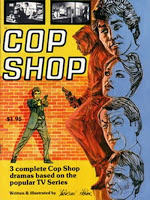
Horak’s last published work fulfilled his lifelong ambition to create his own comic strip. Andea was a science-fiction serial about a glamorous female extra-terrestrial who travelled to Australia from the distant planet Xavax. The Daily Mirrorlaunched Andea as a weekend comic strip in September 1980, no doubt hoping it would prove a worthy match to Roger Fletcher’s science-fiction strip, Staria, which had been a popular mainstay at the Daily Telegraph since 1977. Andeashowcased Horak’s storytelling skills to brilliant effect, with his intricate plots, fantastic characters, and exquisite artwork demonstrating his complete mastery of the medium throughout the series’ seven-year run. It was a fitting end to Yaroslav Horak’s incomparable career as one of Australia’s great comic artists.
Yaroslav Horak was subsequently awarded the Ledger of Honour in recognition of his contributions to Australian comics, as part of the Ledger Awards for 2018 (He was a joint recipient with fellow Australian comic artists, Kathleen and Moira Bertram. Readers can download the 2018 Ledger Awards Annual, which also features a profile on Horak's life and work). The Australian Cartoonists' Association published a lengthy interview with Horak in their Inkspot journal (No.59, 2009), which can be viewed online here. Horak is survived by his Jacie, and his children, Anton, Damon and Natascha.
Images reproduced here were sourced from the following websites: Ausreprints.net; Dave Karlen Original Art Blog; Pikitia Press; The Victor-Hornet Comics; Qwizzeria; Tebeosfera;
September 14, 2020
Gully Foyle: The Best Science-Fiction Comic You Never Read - Part 2
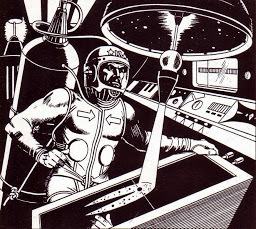 The following is the second (and final) part of my revised and updated account the "Gully Foyle" comic-strip saga, which I originally wrote for the long-expired PulpFaction.net website back in 2007. You can read the preceding installment by clicking here. You may also want to read Daniel Best's comparable account of Reg and Stan Pitt's "lost" comic strip masterpiece at his 20thCentury Danny Boy blog.
The following is the second (and final) part of my revised and updated account the "Gully Foyle" comic-strip saga, which I originally wrote for the long-expired PulpFaction.net website back in 2007. You can read the preceding installment by clicking here. You may also want to read Daniel Best's comparable account of Reg and Stan Pitt's "lost" comic strip masterpiece at his 20thCentury Danny Boy blog.Readers are also encouraged to visit the Stan and Reg Pitt Facebook Group, to view and share rare artwork and photographs devoted to these artists' lives and work.
The Birth of Gully Foyle
Many aspiring cartoonists who began their careers drawing comic books in the 1930s and 1940s hoped they could leverage their experience to break into the competitive, and highly lucrative field of syndicated newspaper comic strips. Stan and Reg Pitt harboured similar ambitions, especially as they had already tasted some measure of success with Silver Starr in the Flameworld for the Sunday Sun and Guardian newspaper. They had developed a daily newspaper comic strip based on Lemmy Caution, the FBI agent created by the British author, Peter Cheyney (1896-1951), which apparently caught the interest of overseas publishers. But the project was abandoned when it became apparent that the promised syndication revenues would not cover the royalty payments demanded by Cheyney’s literary estate (See image below).
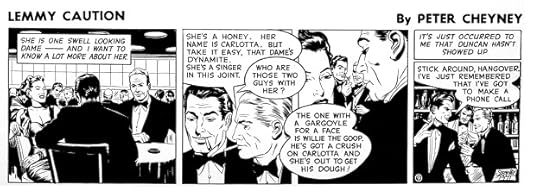
Undeterred, Reg Pitt became convinced that The Stars My Destination would be the perfect vehicle to help them realise their shared ambitions.
‘The book made an indelible impression on me for so many years – even though it would be 10 years before we finally got the chance to do it,’ says Reg. ‘It became an obsession with me over all that time,’ he admits freely. ‘It became an absolute necessity for us to do something with it.’
Stan Pitt, too, could see the visual potential of Bester’s groundbreaking novel.
‘Reg put it to me one morning that I should think about doing another comic, a science-fiction comic, this time by a well-known American author,’ he recalls. ‘He told me that this [book] was the best thing that had ever been written in science-fiction, from the point of view of illustration. He said, “It’s just made for you and if you do it…we’ll have no trouble selling it to America”.’
Reg set about contacting Alfred Bester through a Sydney solicitor known to his family. ‘He was a real cricket nut, because every time we said “Bester”, he kept referring to him as “Bedser” – after the English cricket captain [Alec Bedser]!’
While their solicitor set the legal wheels in motion, Reg and Stan busied themselves preparing a presentation folder showcasing their vision for how their new comic strip – titled Gully Foyle, after the novel’s protagonist – would look.
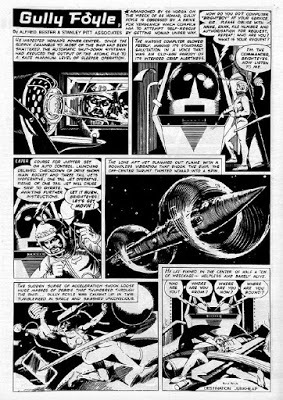 ‘Stan drew illustrations of all the main characters, and depicted situations in which they would find themselves in the comic strip,’ according to Reg. ‘I recall one of those images specifically showing the “burning man” who appeared throughout the book.’
‘Stan drew illustrations of all the main characters, and depicted situations in which they would find themselves in the comic strip,’ according to Reg. ‘I recall one of those images specifically showing the “burning man” who appeared throughout the book.’ The brothers prepared high-quality bromides (black & white photo-prints) of the sample art pages, which Stan hand-tinted using coloured inks.
‘We put these pages together in a presentation folder, which we put inside this graphically designed box, using coloured paper inside and out,’ says Reg. ‘I made all the stuff to go with it – we had to make it so appealing that he [Bester] couldn’t resist it.’
Reg wrote a cover letter to accompany the parcel – then sat back and waited for a response. And waited.
‘There was a period of months where nothing happened,” explains Reg. ‘Then we got this telegram from Alfred Bester and it was obvious he was really annoyed.’
‘The impression we got was that US Customs had told him that the parcel we sent him had insufficient postage and that he’d have to pay for it, if he wanted to get it.’
‘It turned out to be some puny amount, less than US$30 – but our package of artwork was worth hundreds of dollars and I thought, “What a bloody hide you’ve got”!’
The postal delays were overcome, but getting the green light from Alfred Bester to proceed with the comic strip was by no means easy.
‘Alfred Bester was a strange guy,’ explains Reg. ‘He used to send us these pages from notepads, with little notes scribbled on them.’
‘They reminded me of that line from [Australian poet] A.B. “Banjo” Paterson – “like a thumbnail dipped in tar” – these strange notes scribbled in thick pen. He seemed all the time to be preoccupied and these [notes] looked like afterthoughts.’
‘From what we could glean, he gave us carte blanche to do what we wanted. He said. “You obviously know what you’re doing” – he didn’t even make any monetary demands.’
The sporadic correspondence between Reg and Stan Pitt and Alfred Bester was no doubt partly caused by Bester’s nomadic working life. By the late 1950s, Bester was firmly established as the literary editor of Holiday magazine, a role which frequently saw him travel abroad (You can read one of Bester’s articles for Holiday, published in 1961, by clicking here).
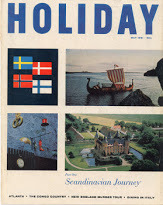
As a result, months passed, and eventually dragged on into years, before the Pitt brothers began work on Gully Foylein earnest.
The project almost ended before it began, when Reg was seriously injured in a car accident, while travelling home in a taxi one night. While recovering from his injuries, Reg received a compensation payout which gave him and Stan the funds they needed to work full-time on the Gully Foyle comic strip.
‘We got enough money to carry us through,” explains Reg. ‘We took out an office in [the Sydney suburb of] Burwood, just to work on the comic – we paid the rent on that and we could draw wages for both of us.’
‘We started work on the strip in 1963, because that’s when my daughter [Jasmine] was born,’ Reg explains, ‘because I had great plans for her future – that would’ve been the motivation to launch the comic.’
In recognition of what he called Bester’s “pyrotechnic” style, Reg decided that he and Stan would abandon the traditional weekend newspaper comic-strip format. Not only would Reg consciously retain much of Bester’s original text for the script, but he and Stan decided to present the strip as a full-page feature.
Although Reg was known to Australian comic book readers primarily as a writer, his collaboration with Stan was a true artistic partnership.
‘My main talent was always art and I was working in the advertising industry all this time as a graphic designer,’ he explains.
‘The writing [for comics] was something I’d been doing all my life, working on comics with Stan since I was 10 years-old.’
‘Stan and I would have brainstorm sessions about the characters and ideas,’ he adds. ‘For instance, we changed Gully Foyle’s helmet from our original, Ned Kelly-styled helmet, to a more modernised design.’
Some aspects of the book were changed, such as the extended sequence where Gully Foyle manually fires the Nomad spaceship’s rockets, which Reg replaced with the introduction of an intelligent, onboard computer, which sent the Nomad spinning off into space at Foyle’s insistent command. (“Let it burn, Brighteyes! Let’s get movin’!”)
‘I’d do the backgrounds on Gully Foyle,’ explains Reg. ‘When it came to designs that would entail buildings or structures, I’d do those, as Stan would much rather draw [human] figures.’
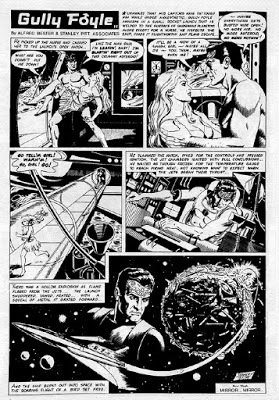
The Pitt brothers worked devotedly on the comic strip for months on end, as they compiled 14 weekly episodes, so they would have a backlog of work ready to publish, if the strip was eventually picked up by a newspaper syndicate. The comic strip sequence concluded at the point where Gully Foyle blasted off from the Sargasso planetoid aboard a stolen spacecraft.
‘We were going after the [American] Sunday papers, but we’d come into a lot of problems, with the [full-page] layout of the comic,’ according to Reg.
‘The Americans wanted a [half-page] landscape format in Sunday strips, so we went through [preparing] several versions of the strip in landscape format.’
‘We even had to put in two “drop-out” panels, which could be taken out, without affecting the story, as well as reduce the size of the artwork,’ he explains.
‘There were two versions of [Gully Foyle] in the alternate landscape format that have never been published – they’ve never even been looked at.’
The Fan Ambassador
Their efforts to sell Gully Foylereceived some unexpected support from a local comics’ fan, John Ryan (1931–1979), who not only published Australia’s first comic fanzine, Down Under (1964), but was also a prolific contributor to American comic fanzines and amateur press association (APA) publications. Ryan won an Alley Award (named after the comic strip character Alley Oop) for Best Article (Fan Category) in 1965 for his piece, “Down Under with the Comics”.
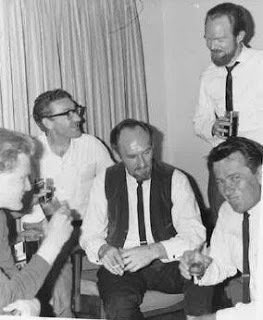 The adjacent photo shows from left: (Unidentified); John Ryan (wearing spectacles); Stan Pitt (wearing vest); Reg Pitt (with beard); and Paul Wheelahan, circa mid/late 1960s.
The adjacent photo shows from left: (Unidentified); John Ryan (wearing spectacles); Stan Pitt (wearing vest); Reg Pitt (with beard); and Paul Wheelahan, circa mid/late 1960s.Ryan devoted an entire installment of his “Bidgee” column to the Gully Foyle project, which appeared in the June 1967 edition of the American fanzine, Star Studded Comics. This provided American readers with their first glimpse of Reg and Stan’s breathtaking artwork.
‘I designed the logo for John’s “Bidgee” column,’ Reg explains. ‘He was only too happy to promote it – he was delighted we were doing a new comic and were aiming so high for it. He was a good friend in that regard.’
Ryan was so passionate about Gully Foyle that he even acted as a go-between for the American newspaper syndicates and the Pitt brothers.
‘John handled all the correspondence on our behalf, and we received replies from most of [the newspaper syndicates] – and some of them were very favourable,’ according to Reg.
‘There was a publisher in New York that was very interested in it,’ as Stan Pitt recalled, ‘and it reached the point where it would have appeared in a few weeks in 25 newspapers throughout the United States.’
‘But they wanted confirmation [from] Alfred Bester himself that it was okay for them to go ahead and do it,’ added Stan.
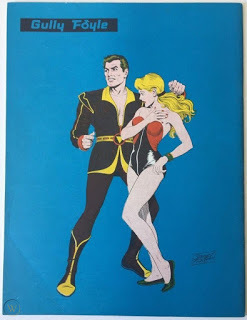 ‘John Ryan carried out a lot of correspondence with the publisher to try and get Alfred Bester to answer his letters, but he never did,’ explains Stan. ‘When Reg finally got an answer from [Bester] to his letters, he [apologized], but when those letters arrived, [Bester] was away on an assignment in Paraguay for Holiday magazine.’
‘John Ryan carried out a lot of correspondence with the publisher to try and get Alfred Bester to answer his letters, but he never did,’ explains Stan. ‘When Reg finally got an answer from [Bester] to his letters, he [apologized], but when those letters arrived, [Bester] was away on an assignment in Paraguay for Holiday magazine.’ The adjacent image shows the back cover of Star Studded Comics no.11 (Summer 1967), the American comics fanzine featuring John Ryan's "Bidgee" column devoted to Stan & Reg Pitt's then-unpublished Gully Foyle comic strip.
Despite receiving Bester’s initial blessings to proceed with the comic strip, an unexpected legal obstacle arose when it was discovered that a planned film adaptation of The Stars My Destinationapparently included exclusive rights to any comic strip adaptation – which meant that Reg and Stan Pitt no longer held the licensing rights to create and sell the Gully Foyle comic strip.
The tyranny of distance, especially in those years before the advent of fax machines or email, also worked against the Pitt brothers.
‘What it amounted to in the end,’ explains Reg. ‘As someone said to us, “if you could be across my desk, we could solve a lot of problems there and then”. The distance [between Australia and America] was what went against us in the end.’
Eventually Reg and Stan decided to abandon the project and concentrate on their respective careers, with Reg returning to the advertising industry, while Stan cemented his position as the premiere cover artist for Cleveland Publishing’s flourishing line of Western :pulp" novels. (Stan eventually painted over 3,500 covers for Cleveland Publishing during 1958-1986. Shown here is Stan's cover for "The Dark Amen", Top Hand Western No.269, Cleveland Publishing, circa late 1960s.)
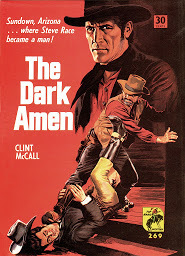
‘By 1967, we were both entrenched in our jobs and gave away all our foolish expectations,’ says Reg. ‘It was a shame, because I recognised Stan’s brilliance as an artist, and Gully Foyle was my futile attempt to wring out one last great comic strip from him.’
The Resurrection of Gully Foyle
Nevertheless, their “failed” project opened doors for Stan and Reg Pitt. Copies of the promotional Gully Foylebooklet compiled by John Ryan caused quite a stir among American comics circles. Acclaimed comic artist Al Williamson was a big fan of Stan’s work on Silver Starr and showed copies of the Gully Foyle samplerto Carmine Infantino and Dick Giordano at DC Comics, who were clearly impressed by Stan and Reg’s work. Consequently, Stan and Reg were commissioned to draw two stories for DC Comics’ horror title, The Witching Hour (Nos.14 & 38). They also produced stories for Gold Key’s mystery anthologies, including The Twilight Zone (No.48) and Boris Karloff Tales of Mystery (No.33). Stan also worked as the uncredited “ghost artist” on the syndicated newspaper comic strip, Secret Agent Corrigan, substituting for the series’ regular illustrator, Al Williamson, for brief periods in 1969 and 1972 (Shown below are two daily episodes of Secret Agent Corrigan, drawn by Stan Pitt, dating from 18-19 August, 1969).
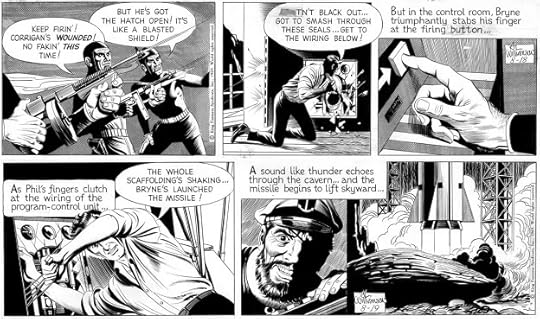
In 1975, Marvel Comics' black & white magazine, Unknown Worlds of Science Fiction, published an interview with Alfred Bester in its second issue, which reproduced a page from Stan & Reg Pitt's comic strip. Gully Foyle, however, seemed destined to languish forever unseen, until decades later, when an Australian advertising artist and comics’ publisher, Richard Rae, introduced himself to Stan Pitt.
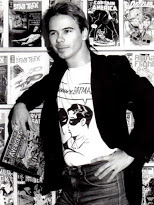 Richard Rae, 1984
Richard Rae, 1984During the late 1970s and early 1980s, Rae had been actively involved in different aspects of Australia’s still largely moribund comics’ scene. Briefly working as a cover artist for Sydney publisher KG Murray’s line of American reprint comics, Rae began writing and publishing a series of science-fiction comics, including Star Heroes and The Greatest Super Hero.
He co-owned and operated Sydney’s Comic Empire store with the late Peter Mitris, who disappeared under mysterious circumstances in 1991. Rae was the principal organiser behind Australia’s First International Comic Convention, the grandly named event held at the Sydney Opera House in January 1986, which featured American comic book artists Will Eisnerand Jim Steranko as headline international guests (Stan Lee, publisher of Marvel Comics, was slated to appear as Guest of Honour, but withdrew from the event at the last minute).
It was during this period that Richard Rae first met Stanley Pitt. ‘My first contact with Stan was when I was putting together my Cartoonists of Australia book back in the early ‘80s,’ he recalls (See cover image below).
‘Stan did not have the time to be interviewed for the book, as he was flat-out doing paintings of western covers [for Cleveland Publishing].’
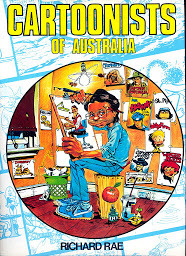
‘Also, he was not that interested in being in my book, as John Ryan’s history of Australian comics, Panel by Panel[which prominently featured Stan’s work] had just been released in ‘79.”
‘Later, when Stan and I actually met for the first time, Stan told me he had made a mistake not being in the book, as it was one of his favourite books, because it included photos of all the artists - something I've always insisted upon and that Panel by Panel did not have.’
‘Anyway, we just hit it off great and my family became really good friends with him – my son even called him “Poppa Stan”.’
‘Then, during one of our weekends together, Stan and Reg told me the full story about Ryan and Bester and Gully Foyle,’ Richard says. ‘Stan was really sad that no one wanted to run with it … not Marvel Comics, not DC, not King Features Syndicate … no one!’
‘It was that same weekend Stan asked me to be his manager,’ explains Richard. ‘As Stan was always being bugged by fans and collectors who wanted a piece of him, so I said, “Let’s let them have a piece of you – but let’s make sure you get paid for that piece”.’
‘Stan loved that idea, so I went about producing a number of items that Stan and I could sell to fans and collectors.’
Under the banner of his new company, Home Grown Media, Rae repackaged and marketed a range of publications and ancillary items, featuring examples of Stan’s “pulp fiction” cover illustrations on posters and calendars (see image below), as well as giant-sized reproductions of the early Silver Starr in the Flameworld comic strips.
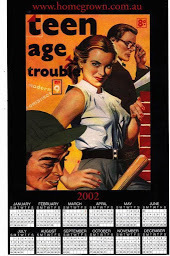
Perhaps the most sought-after title amongst all these was the limited-edition Gully Foyle magazine released in 2001, which published for the first time in Australia all 14 full-page instalments of the Gully Foyle comic strip.
‘The “compleat” Gully Foyle book was just one of the items I produced,’ Richard explains. ‘But Stan and Reg were blown away [to see that] their amazing work on Bester’s story was finally in print!’
The End
The author would like to thank the following people, whose gracious assistance and generosity of time made this article possible: Graeme Cliffe; Dr. Jasmine Henderson; Luke Pitt; Reg Pitt; Richard Rae; Dennis Ray; and John Weeks. All errors and omissions, however, are the author’s own.
Text © copyright 2007-2020 Kevin Patrick and cannot be reproduced without the author’s permission, except for purposes of comment and review. All featured artwork and/or images are © copyright 2007-2020 their respective copyright holders and are reproduced here for the purpose of comment and criticism.
All quotes attributed to Stanley Pitt are taken from a transcript of a radio interview (© Spectrum FM Radio) conducted by John Weeks on 1 November 1997 on 3MDR 97.1 FM, Victoria, Australia, and used with permission.
September 7, 2020
Gully Foyle: The Best Science-Fiction Comic You Never Read - Part 1
The following is a revised and updated version of the article I originally wrote for the long-expired PulpFaction.net website back in 2007. Since then, the full story behind the “lost” comic-strip adaptation of Alfred Bester’s SF novel, The Stars My Destination, has been told in even greater depth by Daniel Best on his 20thCentury Danny Boy blog. But my intention has been, for many years now, to republish my original account of Stanley and Reginald Pitt’s lost comic-strip masterpiece, Gully Foyle. I hope you will enjoy discovering this fascinating fragment of Australian comics history.
The Pulp Apprentice
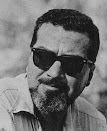 Alfred Bester
Alfred BesterAlfred Bester (1913-1987) was born and raised in New York City, and studied at University of Pennsylvania in the mid-1930s. He briefly attended Columbia Law School, but dropped out to begin his professional writing career in public relations in the late 1930s. He wrote his first short story, “The Broken Axiom”, for the April 1939 edition of Thrilling Wond er Stories , but it wasn’t until the early 1950s when he honed his distinctive style and, in doing so, demonstrated just how far the boundaries of science-fiction literature could be stretched.
Bester’s writing apprenticeship began just as the pulp magazines he wrote for were losing ground to the meteoric rise of America’s comic book industry. Far from spelling the end of his embryonic career, comic books provided a valuable – and lucrative – training ground for Bester throughout the 1940s. He wrote several scripts for Fawcett Publications’ Captain Marvel Adventures, but spent most of the decade working for DC Comics, penning the adventures of ‘Genius Jones’ and ‘Starman’ for Adventure Comics, and writing stories for Green Lantern’s self-titled comic magazine (For many years, it was widely believed that Bester composed Green Lantern’s famous oath, but he refuted this claim decades later).
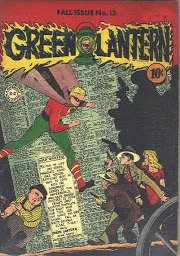
Bester also worked as a “ghost writer” for Lee Falk, creator of the popular newspaper comic strips, Mandrake the Magician and The Phantom, during the mid-1940s, while Falk served as radio director for the Office of War Information’s foreign-language division during World War Two (Bester is credited with writing the 1943 Phantom storyline, “Bent Beak Broder”, which introduced the Phantom’s civilian alter ego, ‘Mr. Walker’, and established the popular ‘Old Jungle Sayings’ script device, which has remained in use with The Phantomcomic strip ever since).
In 1936, Bester married Rolly Goulko (1917-1984), a successful radio and television actor, who later became casting director with the New York advertising agency, Ted Bates & Company. She told her husband that the producers of the radio serial, Nick Carter, Master Detective, were seeking script submissions. Bester wrote four episodes of the series, which were aired by the Mutual Broadcasting System throughout 1944-46.
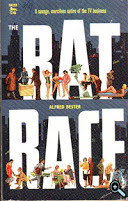 He continued writing science-fiction stories for American “pulp magazines” throughout the 1940s, including Astounding Science Fiction, Astonishing Stories, and Unknown Worlds. His first published novel, however, had nothing to do with science fiction. Who He? was a satirical exposé of America’s television industry, told from the perspective of an alcoholic gameshow writer. The novel was originally published by Dial Press in 1953 and renamed The Rat Race for its paperback release by Berkley Books in 1955.
He continued writing science-fiction stories for American “pulp magazines” throughout the 1940s, including Astounding Science Fiction, Astonishing Stories, and Unknown Worlds. His first published novel, however, had nothing to do with science fiction. Who He? was a satirical exposé of America’s television industry, told from the perspective of an alcoholic gameshow writer. The novel was originally published by Dial Press in 1953 and renamed The Rat Race for its paperback release by Berkley Books in 1955. The Demolished Man
By the early 1950s, Bester had established himself as a successful and popular writer, renowned for his original and imaginative work in comics, magazines, radio, and television. But his greatest literary achievements took shape in the pages of the science-fiction “pulps” where he began his career more than a decade ago.
Bester’s debut science-fiction novel, The Demolished Man, was originally serialised in Galaxy Science-Fiction magazine throughout January-March 1952. It told the story of Ben Reich, a ruthless business magnate who sought to commit murder in a society where telepathy made it impossible for people to conceal their criminal impulses. Displaying a cynical, “adult” sensibility rarely seen in science-fiction, The Demolished Man caused a minor sensation when it was published in book form in 1953. It won the inaugural Hugo Award for ‘Best Novel’ in 1953 and has since been recognized as the literary forerunner of the so-called “cyberpunk”science-fiction genre which flourished throughout the 1980s and 1990s.
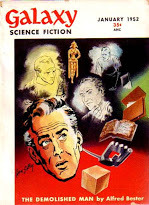
The Stars My Destination
For his next novel, Bester turned to the French author Alexandre Dumas (1802-1870) for creative inspiration. ‘I’d been toying with the notion of using The Count of Monte Cristo as the pattern for a story’, as Bester later wrote in Hell’s Cartographers (Weidenfeld & Nicholson 1975). ‘The reason is simple – I’d always preferred the anti-hero and I’d always found high drama in compulsive types.’
‘[The story] remained a notion until I found a pile of old National Geographic magazines… [and] came across a piece about [a sailor] who lasted four months on an open raft. He’d been sighted several times by passing ships, which refused to change course to rescue him, because it was a Nazi submarine trick to put out decoys like this.’
This intriguing anecdote formed the kernel for Bester’s new work, which revolved around Gulliver (‘Gully’) Foyle, a brutish, primitive spaceman who is transformed into a ruthless instrument of revenge, after a passing spacecraft refuses to rescue him, leaving Gully Foyle to die in the airless confines of his own crippled rocket ship.
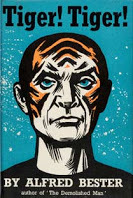 Bester’s second novel was first published in Britain under the title Tiger! Tiger! (Sidgwick & Jackson, 1956), inspired by William Blake’s famous poem, ‘The Tyger’(1794). However, when it was initially serialised in Galaxy Science Fictionlater that year, it was published under the alternate title, The Stars My Destination, at the suggestion of the magazine’s founding editor, H.L. Gold.
Bester’s second novel was first published in Britain under the title Tiger! Tiger! (Sidgwick & Jackson, 1956), inspired by William Blake’s famous poem, ‘The Tyger’(1794). However, when it was initially serialised in Galaxy Science Fictionlater that year, it was published under the alternate title, The Stars My Destination, at the suggestion of the magazine’s founding editor, H.L. Gold. The Brothers Pitt
The Stars My Destinationreceived mixed reviews from critics, but it was immediately recognised by Bester’s peers as a landmark work that set ambitious new standards for speculative fiction. Readers, too, embraced Bester’s novel – but even he could not have guessed how his latest work electrified the imagination of an avid science-fiction fan, living on the other side of the world.
Reg Pitt (1929-2010) was at that time a commercial illustrator and graphic designer, living in Sydney, Australia. He was also an avid science-fiction fan who, decades later, could still recall the thrill he felt when he first read Bester’s novel.
‘As soon as I read that first issue [of Galaxy], I was dying to read the rest of the book – and I became a lifelong fan of Alfred Bester, there and then.’
‘It made an indelible impression on me for so many years,’ he admits. ‘It became an obsession.’
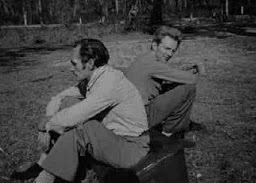 Stan (L) and Reg Pitt (R), early 1950sReg was already immersed in science fiction, helping his elder brother Stanley Pitt (1925-2002) compile the comic-book version of the latter’s renowned newspaper strip, Silver Starr in the Flameworld.
Stan (L) and Reg Pitt (R), early 1950sReg was already immersed in science fiction, helping his elder brother Stanley Pitt (1925-2002) compile the comic-book version of the latter’s renowned newspaper strip, Silver Starr in the Flameworld.
Silver Starr was an Australian soldier who served in the Pacific Theatre during World War Two. After he was discharged from the Army, he joined a daring expedition to the Earth’s core aboard a vessel capable of smashing through solid rock, built by the scientist Dr. Onro. Together, they discovered the mysterious Flame World and rescued its rightful ruler, Queen Pristine, from the evil despot, Tarka.
But the Silver Starr comic came about almost by accident, as Stan Pitt later recalled.
‘I did a [full-colour comic] called Nelson Power Conquers the Universe – it was never printed, incidentally, it never went on the market.’
Nelson Power Conquers the Universewas a revamped and extended version of “Universal Conquest”, a science-fiction serial written by Frank Ashley, who also wrote Stan’s first-ever comic book, Anthony Fury (Consolidated Press, 1942). Episodes of “Universal Conquest” appeared in various comics issued by Frank Johnson Publications (Sydney) during the mid-1940s.
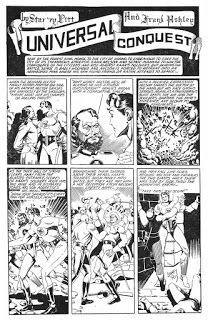
‘But I introduced Silver Starr in the last panel and a friend of mine at the George Patterson advertising company in Sydney took [my artwork] along to Eric Kennedy, Chief Executive Officer of the Sunnewspaper, and he fell in love with the work.’
‘He asked me to come in and see him and he said, “This looks good, this one you’re talking about in this last panel, Silver Starr – I like the title ‘Silver Starr’”, he said. “Could you do Silver Starr for us?” and I said ‘Sure’.
Associated Newspapers, publishers of the Sunnewspaper, had lost publication rights to Flash Gordon(renamed “Speed Gordon” in Australia), and was understandably keen to secure a replacement for this popular American science-fiction serial for its weekend comics supplement.
They could not have found a better candidate than Stan Pitt, whose work – like so many comic artists of his generation – was greatly influenced by the peerless style of Alex Raymond (1909-1956), creator of Flash Gordon.
Silver Starr in the Flameworldmade its debut in Sydney’s Sunday Sun and Guardian newspaper on 24 November 1946. Initially spread over two tabloid pages and printed in sumptuous colour, Silver Starr was easily the most visually stunning Australian comic strip of the post-war era. Gradually, the strip was reduced to single page, then half-page instalments by the time its concluding episode appeared in November 1948 (See image below).
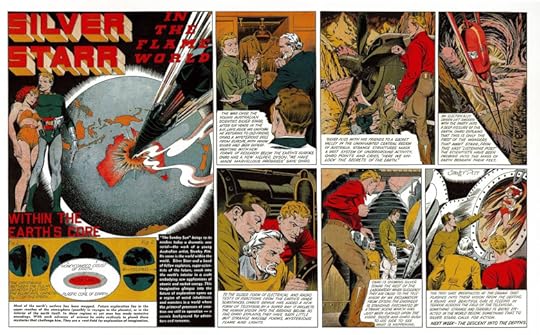
Reg Pitt contributed story ideas and dialogue, in addition to illustrating background scenes for Silver Starr in the Flameworld. He helped Stan reformat his original artwork for republication in the Silver Starr Super Comic, released by Young’s Merchandising Co. (Sydney) in 1950. The comic was reprinted in New Zealand by the Times Printing Works (Auckland), and briefly appeared in the British comic, Strange Worlds, in the early 1950s.
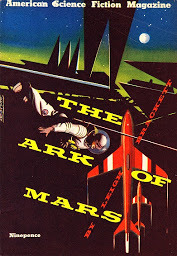 By now, Stan had become a sought-after commercial illustrator among advertising agencies and pulp/comic magazine publishers. During this period, Pitt painted a string of bold, eye-catching cover illustrations for
American Science Fiction
, which reprinted short stories by such prominent American authors as Leigh Brackett, Robert Heinlein, and John W. Campbell. American Science Fiction Magazine, like many Australian “pulp fiction” titles of its day, was a 36-page “novelette” digest by Malian Press (Sydney), and ran for 41 issues throughout 1952-55. Stan’s cover illustrations were greatly enhanced by Reg’s imaginative layouts and sophisticated logo designs, making these covers classic examples of 1950s-era science-fiction illustration.
By now, Stan had become a sought-after commercial illustrator among advertising agencies and pulp/comic magazine publishers. During this period, Pitt painted a string of bold, eye-catching cover illustrations for
American Science Fiction
, which reprinted short stories by such prominent American authors as Leigh Brackett, Robert Heinlein, and John W. Campbell. American Science Fiction Magazine, like many Australian “pulp fiction” titles of its day, was a 36-page “novelette” digest by Malian Press (Sydney), and ran for 41 issues throughout 1952-55. Stan’s cover illustrations were greatly enhanced by Reg’s imaginative layouts and sophisticated logo designs, making these covers classic examples of 1950s-era science-fiction illustration. 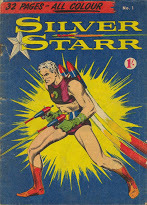 Stan had by this time begun working for the Cleveland Publishing Company (Sydney), which was fast becoming a dominant force in Australia’s “pulp fiction” magazine market, thanks in part to its wildly successful Larry Kent/I Hate Crime series. The company’s founder, Jack Atkins, was determined to capture a share of the local comic book market, and commissioned Stan to produce an all-new Silver Starr comic, published in full colour. Sadly, this proved to be a costly failure, with most of the comic’s 100,000-copy print run eventually being sold through supermarket chains at heavily discounted prices. Silver Starrwas released in 1956, just as newly launched television broadcasting services were having a calamitous effect in the local comics industry. The new, full-colour series of Silver Starr did not survive beyond its debut issue, but Reg and Stan Pitt repackaged earlier “Silver Starr” stories for Cleveland Publishing’s King Size Comic, for which they also produced new instalments of their evergreen science-fiction hero.
Stan had by this time begun working for the Cleveland Publishing Company (Sydney), which was fast becoming a dominant force in Australia’s “pulp fiction” magazine market, thanks in part to its wildly successful Larry Kent/I Hate Crime series. The company’s founder, Jack Atkins, was determined to capture a share of the local comic book market, and commissioned Stan to produce an all-new Silver Starr comic, published in full colour. Sadly, this proved to be a costly failure, with most of the comic’s 100,000-copy print run eventually being sold through supermarket chains at heavily discounted prices. Silver Starrwas released in 1956, just as newly launched television broadcasting services were having a calamitous effect in the local comics industry. The new, full-colour series of Silver Starr did not survive beyond its debut issue, but Reg and Stan Pitt repackaged earlier “Silver Starr” stories for Cleveland Publishing’s King Size Comic, for which they also produced new instalments of their evergreen science-fiction hero.
End of Part 1
The author would like to thank the following people, whose gracious assistance and generosity of time made this article possible: Graeme Cliffe; Dr. Jasmine Henderson; Luke Pitt; Reg Pitt; Dennis Ray; and John Weeks. All errors and omissions, however, are the author’s own.
Text © copyright 2007-2020 Kevin Patrick and cannot be reproduced without the author’s permission, except for purposes of comment and review. All featured artwork and/or images are © copyright 2007-2020 their respective copyright holders and are reproduced here for the purpose of comment and criticism.
All quotes attributed to Stanley Pitt are taken from a transcript of a radio interview (© Spectrum FM Radio) conducted by John Weeks on 1 November 1997 on 3MDR 97.1 FM, Victoria, Australia, and used with permission.
July 31, 2020
(Re)defining the History of Australian Comics
 Queenie Chan, Australian manga artistNOTE: This blog entry is a modified version of a post I submitted to the "Australian Comics History 1960-2010" Facebook group on 20 June, 2020. The questions I raised here generated a lot of enthusiastic debate and discussion, so I thought I'd share it with the readers of this blog, as it may be of interest to the broader community of Australian comic-book fans, collectors and historians.As someone who's written about the history of Australian comics for many years - both as a fan and as an academic - I've always been interested in identifying and characterising the different historical phases of Australian comics production, especially in the decades following the commercial collapse of the comics publishing industry in the 1960s.Earlier this year, as a member of the Ledger of Honour judging panel, I joined my fellow judges in a thought-provoking email exchange about whether American comics terminology (Golden Age, Silver Age, Bronze Age, etc) can be usefully applied to the Australian comics scene since the 1960s.The fact that the "Australian Comics History 1960-2010" Facebook group spun off from the "Old Australian Pre-Decimal Comics Up to 1966" Facebook group suggests there is, at some level, a recognition among local comics fans, creators and collectors that Australian comics published since the 1970s are significantly different from their wartime and postwar predecessors (I would also suggest that the audience for Australian comic since the 1970s is significantly different from the largely juvenile audience that read comic books in the their millions back in the 1940s and 1950s).Speaking personally, I think the history of Australian comics since the 1970s has been so diverse and diffuse, that it defies the kind of "easy" categorisations that have been applied to American comics history over this same time period (I address this topic in my essay, "Radical Graphics: Australian Second-Phase Comics", which will appear in forthcoming collection, The Oxford Handbook of Comic Book Studies)
Queenie Chan, Australian manga artistNOTE: This blog entry is a modified version of a post I submitted to the "Australian Comics History 1960-2010" Facebook group on 20 June, 2020. The questions I raised here generated a lot of enthusiastic debate and discussion, so I thought I'd share it with the readers of this blog, as it may be of interest to the broader community of Australian comic-book fans, collectors and historians.As someone who's written about the history of Australian comics for many years - both as a fan and as an academic - I've always been interested in identifying and characterising the different historical phases of Australian comics production, especially in the decades following the commercial collapse of the comics publishing industry in the 1960s.Earlier this year, as a member of the Ledger of Honour judging panel, I joined my fellow judges in a thought-provoking email exchange about whether American comics terminology (Golden Age, Silver Age, Bronze Age, etc) can be usefully applied to the Australian comics scene since the 1960s.The fact that the "Australian Comics History 1960-2010" Facebook group spun off from the "Old Australian Pre-Decimal Comics Up to 1966" Facebook group suggests there is, at some level, a recognition among local comics fans, creators and collectors that Australian comics published since the 1970s are significantly different from their wartime and postwar predecessors (I would also suggest that the audience for Australian comic since the 1970s is significantly different from the largely juvenile audience that read comic books in the their millions back in the 1940s and 1950s).Speaking personally, I think the history of Australian comics since the 1970s has been so diverse and diffuse, that it defies the kind of "easy" categorisations that have been applied to American comics history over this same time period (I address this topic in my essay, "Radical Graphics: Australian Second-Phase Comics", which will appear in forthcoming collection, The Oxford Handbook of Comic Book Studies)
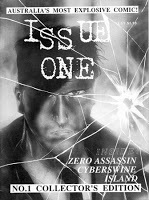 I would argue, however, that the mid-late 1980s/early 1990s probably represented the last concerted effort to foster a legitimate comics "industry", through the combined efforts of publishers like Issue One, Cyclone/Southern Aurora, New Age Graphics, and Aargh! Comics (For a good visual/historical guide to this period of Australian comics, vist Tabula Rasa's Australian Comics page).While thinking about this topic, I was reminded of a great comic strip essay by Queenie Chan (pictured above), wherein she reflected on her experience, migrating from Hong Kong to Australia, and how her exposure to (and love of) Japanese manga shaped her own career as a comics artist based in Australia. But she often found herself isolated even within the local comics community, which she felt was dominated by male creators who drew in a largely Western style. Her essay was published online by ABC Radio National in October 2018, and you can read it by clicking on this link.What I especially liked about this essay was how Chan brought an "outsider's perspective" (as someone immersed in Japanese, rather than Western comics culture/traditions) in their assessment of the contemporary Australian comics "scene", or "community".
I would argue, however, that the mid-late 1980s/early 1990s probably represented the last concerted effort to foster a legitimate comics "industry", through the combined efforts of publishers like Issue One, Cyclone/Southern Aurora, New Age Graphics, and Aargh! Comics (For a good visual/historical guide to this period of Australian comics, vist Tabula Rasa's Australian Comics page).While thinking about this topic, I was reminded of a great comic strip essay by Queenie Chan (pictured above), wherein she reflected on her experience, migrating from Hong Kong to Australia, and how her exposure to (and love of) Japanese manga shaped her own career as a comics artist based in Australia. But she often found herself isolated even within the local comics community, which she felt was dominated by male creators who drew in a largely Western style. Her essay was published online by ABC Radio National in October 2018, and you can read it by clicking on this link.What I especially liked about this essay was how Chan brought an "outsider's perspective" (as someone immersed in Japanese, rather than Western comics culture/traditions) in their assessment of the contemporary Australian comics "scene", or "community".
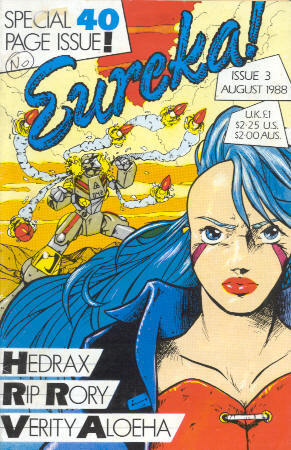 Which got me thinking about my original question - how can we define the history of Australian comics since the 1970s? Queenie Chan's own story highlights how influential Asian comics have become since the 1980s, perhaps beginning with the "Hedrax" strip by Ian Gould & Steve Stamatiadis in Eureka! (1988), and continuing through more recent titles like Azerath (2004). This phenomenon is evident throughout North America and Europe as well, where Manga-styled comics have proved especially popular with younger readers than Western-styled comics, even in countries with robust domestic comics industries.But Australian comics have always been open to foreign trends and influences, throughout the twentieth century - from British story papers in the 1920s and 1930s, to American-style comics in the 1940s and 1950s, through to new wave Franco-Belgian and British "small press" movements of the 1970s and 1980s. The influence of Manga, and other Asian comics traditions (such as Korean Manhwa), is simply the latest example of how Australian comics (and their creators) have assimilated and adapted foreign influences for their own aesthetic/creative needsSome might argue, with good reason, that any attempt to classify, or categorize the history of Australian comics since the 1970s is an ultimately pointless task, one made impossible by the diverse and fragmented nature of local comics production throughout the last five decades (Local book publishers' belated "discovery" of Australian graphic novels since the mid-2000s arguably constitutes another distinct phase in Australian comics history).But it's a question that continues to fascinate me, and will no doubt remain a topic of lively debate among Australian comic creators, collectors and scholars alike for some time yet.
Which got me thinking about my original question - how can we define the history of Australian comics since the 1970s? Queenie Chan's own story highlights how influential Asian comics have become since the 1980s, perhaps beginning with the "Hedrax" strip by Ian Gould & Steve Stamatiadis in Eureka! (1988), and continuing through more recent titles like Azerath (2004). This phenomenon is evident throughout North America and Europe as well, where Manga-styled comics have proved especially popular with younger readers than Western-styled comics, even in countries with robust domestic comics industries.But Australian comics have always been open to foreign trends and influences, throughout the twentieth century - from British story papers in the 1920s and 1930s, to American-style comics in the 1940s and 1950s, through to new wave Franco-Belgian and British "small press" movements of the 1970s and 1980s. The influence of Manga, and other Asian comics traditions (such as Korean Manhwa), is simply the latest example of how Australian comics (and their creators) have assimilated and adapted foreign influences for their own aesthetic/creative needsSome might argue, with good reason, that any attempt to classify, or categorize the history of Australian comics since the 1970s is an ultimately pointless task, one made impossible by the diverse and fragmented nature of local comics production throughout the last five decades (Local book publishers' belated "discovery" of Australian graphic novels since the mid-2000s arguably constitutes another distinct phase in Australian comics history).But it's a question that continues to fascinate me, and will no doubt remain a topic of lively debate among Australian comic creators, collectors and scholars alike for some time yet.
July 2, 2019
Ledger of Honour 2019 - Stanley and Reginald Pitt
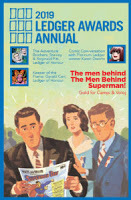 The Ledger Awards were launched in 2005 to formally recognize both outstanding new works by Australian comic book/graphic novel creators, as well as acknowledge the work of earlier writers and artists who made historically significant contributions to Australian comics. The 2019 Ledger Awards Annual is now available to download as a single PDF file from the Ledger Awards website, and is an invaluable record of the many diverse and exciting new comics and graphic novels currently published in Australia.
The Ledger Awards were launched in 2005 to formally recognize both outstanding new works by Australian comic book/graphic novel creators, as well as acknowledge the work of earlier writers and artists who made historically significant contributions to Australian comics. The 2019 Ledger Awards Annual is now available to download as a single PDF file from the Ledger Awards website, and is an invaluable record of the many diverse and exciting new comics and graphic novels currently published in Australia.This year's posthumous Ledger of Honour went to Stanley and Reginald Pitt, two brothers who created some of the most memorable Australian comic strip and comic magazine series published in the 1940s and 1950s. These included Silver Starr and the Flameworld, Yarmak - Jungle King Comic, and Captain Power, along with their unfinished masterpiece, Gully Foyle - the ill-fated comic-strip adaptation of Alfred Bester's science-fiction novel, The Stars My Destination.
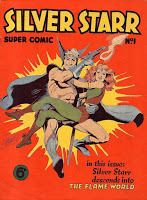
I was invited to write a bio-bibliographic essay on Stanley and Reginald Pitt for the 2019 Ledger Awards Annual, in recognition of their posthumous Ledger of Honour award. One brief section of my original essay manuscript was, however, omitted from the published version - presumably due to space limitations. For the sake of completion, I'm reprinting the omitted text below, which should have appeared after the penultimate paragraph on page 34 of the 2019 Ledger Awards Annual:
Newspaper comic strips, unlike comic magazines, were held in high regard by the general public, and successful adventure-serial comic strips which compelled readers to buy the next day’s edition were especially prized by newspaper editors. Reg and Stan Pitt were keen to enter this prestigious field, and devoted their energies to creating a daily comic-strip featuring Lemmy Caution, an FBI agent created by British novelist Peter Cheyney (1896-1951). They produced numerous sample episodes of the Lemmy Caution strip, and had secured interest from several newspapers in France, where a series of Lemmy Caution films, starring the American-born actor While the unpublished Lemmy Caution newspaper strip forms a relatively minor part of Stanley and Reginald Pitt's overall body of work, it is nevertheless indicative of their creative ambitions and prodigious output during the 1950s. Having tasted some measure of local success selling comic strips to Sydney newspapers, the Pitt brothers continued to invest time and energy in pursuing their lifelong goal to create a syndicated newspaper comic strip.
While I've intermittently referred to Stanley Pitt's work in numerous posts published elsewhere on this blog, I have written more extensively about Reginald Pitt's latter career as an abstract painter, culminating in my tribute to Reginald Pitt, following his death in 2010. While I have yet to republish my 2007 article on the Pitt brother's acclaimed Gully Foyle comic strip - it appeared on the now-defunct Pulpfaction.net website - I published a brief postscript about the entire "Gully Foyle" saga in June 2008, which can be read here.

